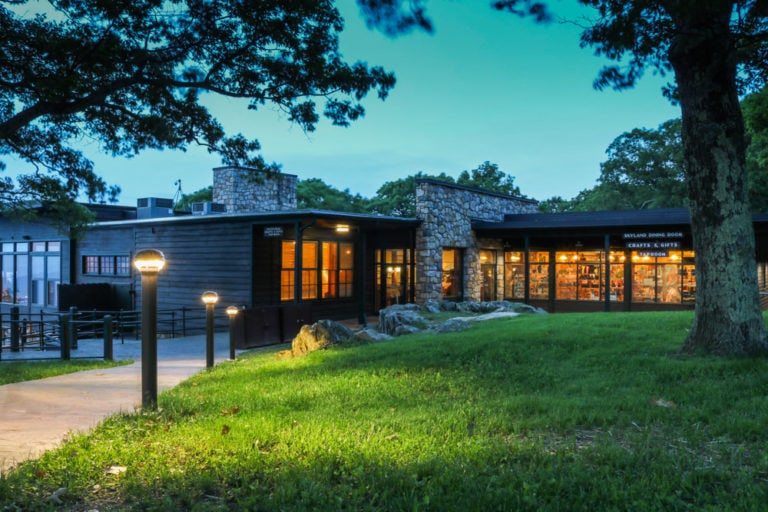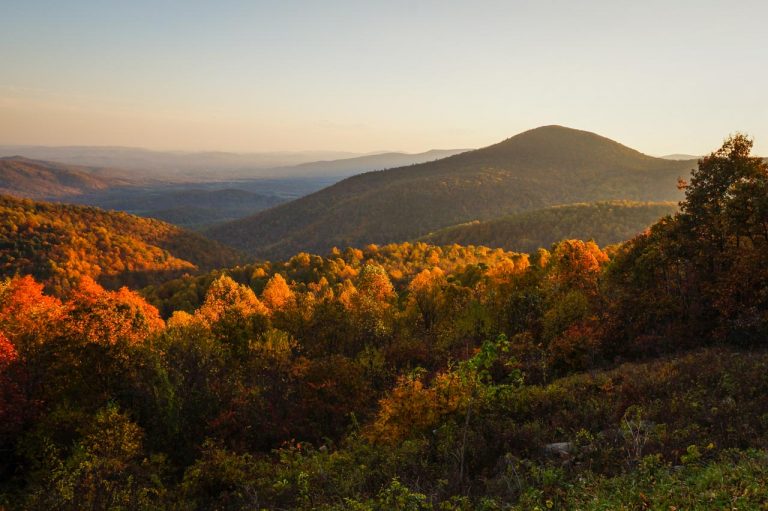10 Coolest Beach Campgrounds in the National Parks
Camping is extremely popular among holidaying Americans and what better place to pitch your tent or park your RV than a national park campground? And I’ll do one better: is there a more fun place to camp than a national park campground on the beach? I didn’t think so either!
So here’s a list of ten amazing beach campgrounds in the national parks, from south Florida to the Pacific Northwest and even Alaska.
Top 10 Coolest Beach Campgrounds in the National Parks
Before talking about the greatest national park beach campgrounds, I wanted to explain the definition of a “beach” that I used. In this article, I’ve used the broadest definition of what qualifies as a beach.
According to National Geographic, a “beach is a narrow, gently sloping strip of land that lies along the edge of an ocean, lake, or river. Materials such as sand, pebbles, rocks, and seashell fragments cover beaches.”
So, that’s why you’ll find beach campgrounds in national parks that may be somewhat unusual at first glance. Examples include a fantastic campground on a lakeshore in Washington’s North Cascades and one near a stream in Colorado’s Great Sand Dunes.
All these campgrounds do, however, provide access to some body of water, whether it’s the Pacific Ocean, Gulf of Mexico, the Caribbean Sea, a river, or even a glacial lake. Some may offer world-class sunbathing and swimming opportunities, while others are limited to “drier” activities like boating, fishing, and/or hiking.
Either way, every single one of the following beach campgrounds in the national parks is unique in its own right, providing unforgettable camping experiences you won’t find elsewhere in the United States—or even in the world.
10. Apgar Campground, Glacier National Park (Montana)
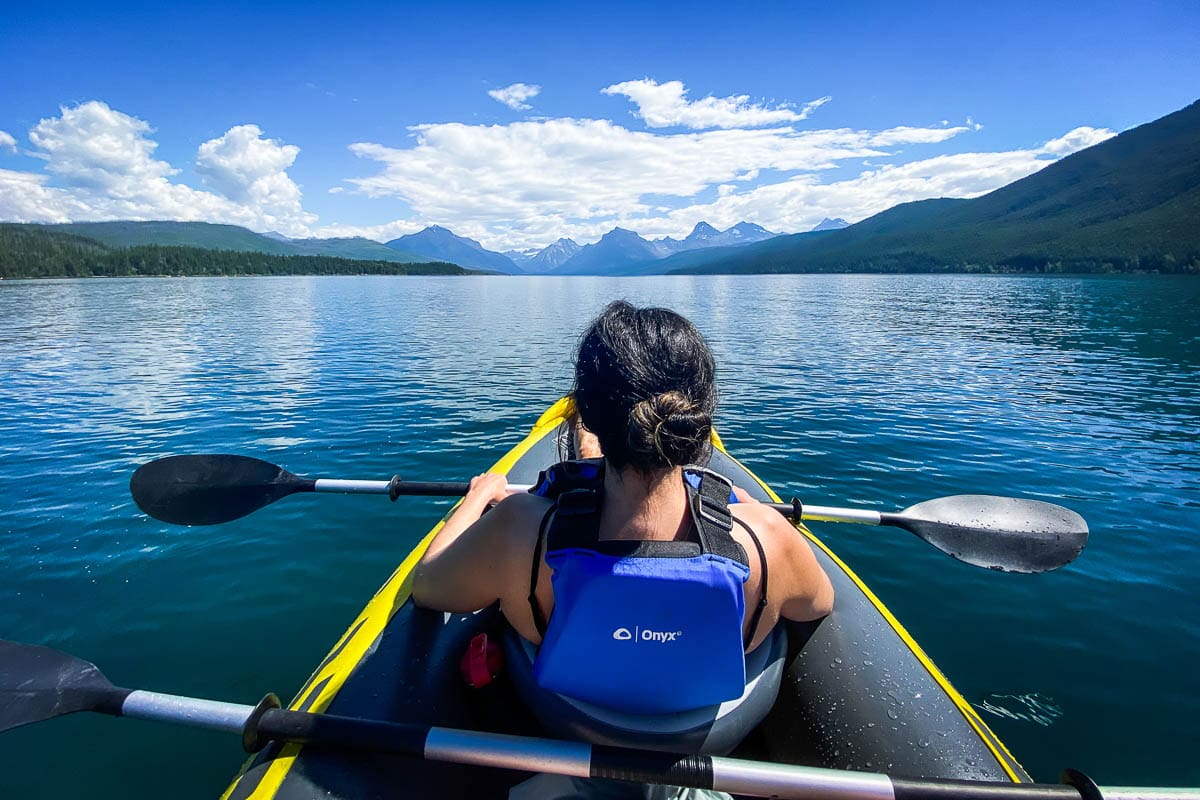
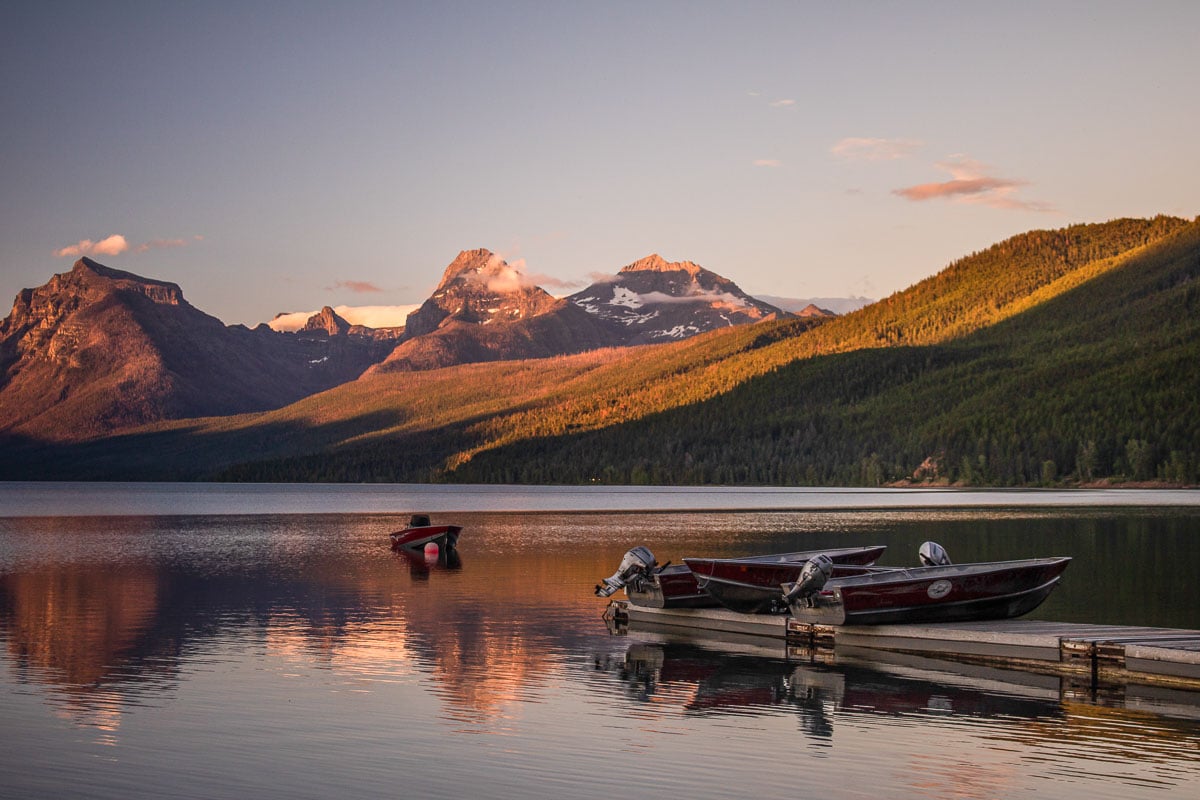
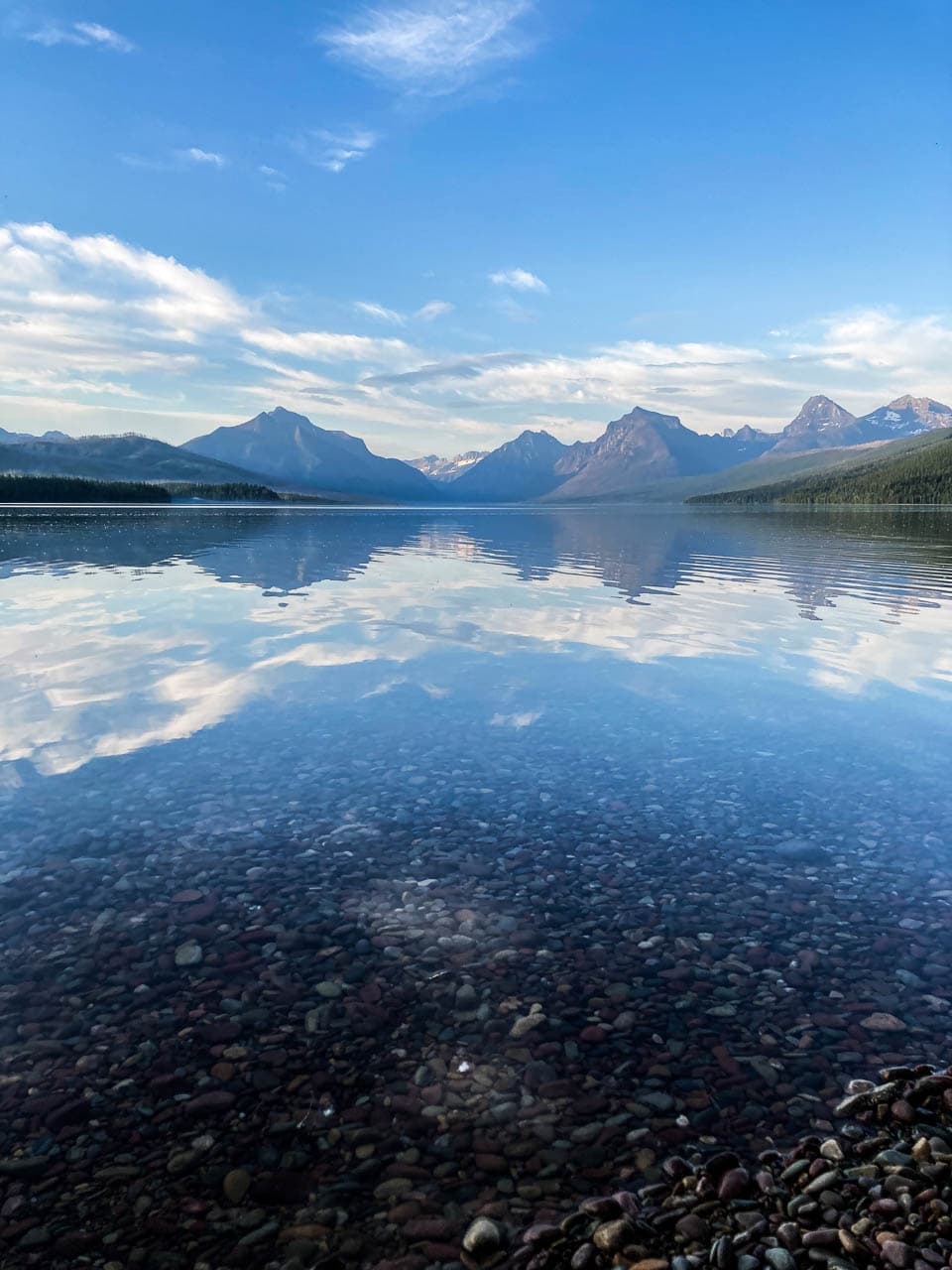
Located near the south shore of glorious Lake McDonald, Apgar Campground is the largest campground in Glacier National Park and accommodates both tent campers and RVers. Although the campground sits in a forest, the lakeshore is just a quick stroll away.
It’s also a short walk to Apgar Village, one of the park’s busiest areas, where you can browse shops, grab snacks, enjoy lunch and dinner, and rent bikes and boats. Watching the sunset over Lake McDonald is one of the highlights of the park, while the colorful pebble beach is nothing short of iconic.
Reservations are required for Apgar Campground from spring through fall. You can reserve a site on Recreation.gov.
9. Boca Chita Campground, Biscayne National Park (Florida)
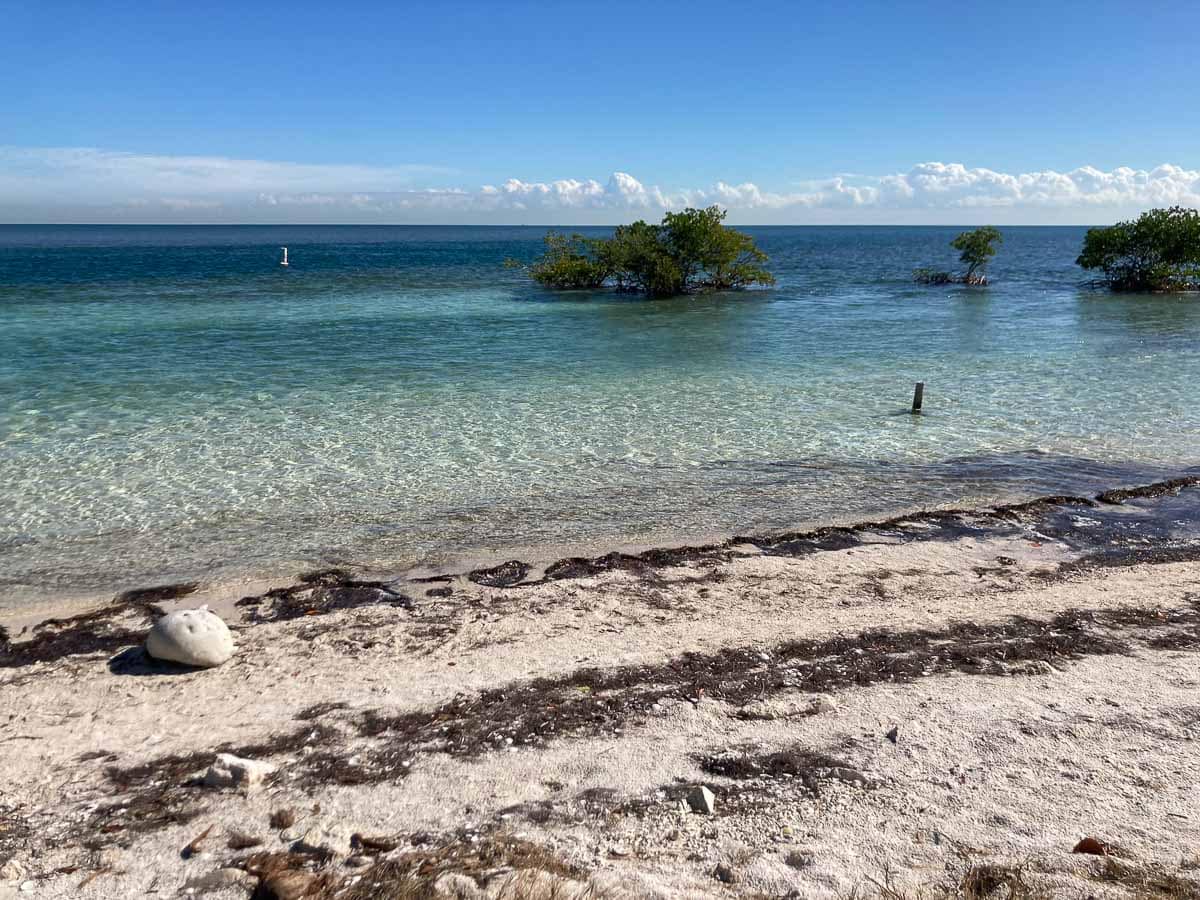
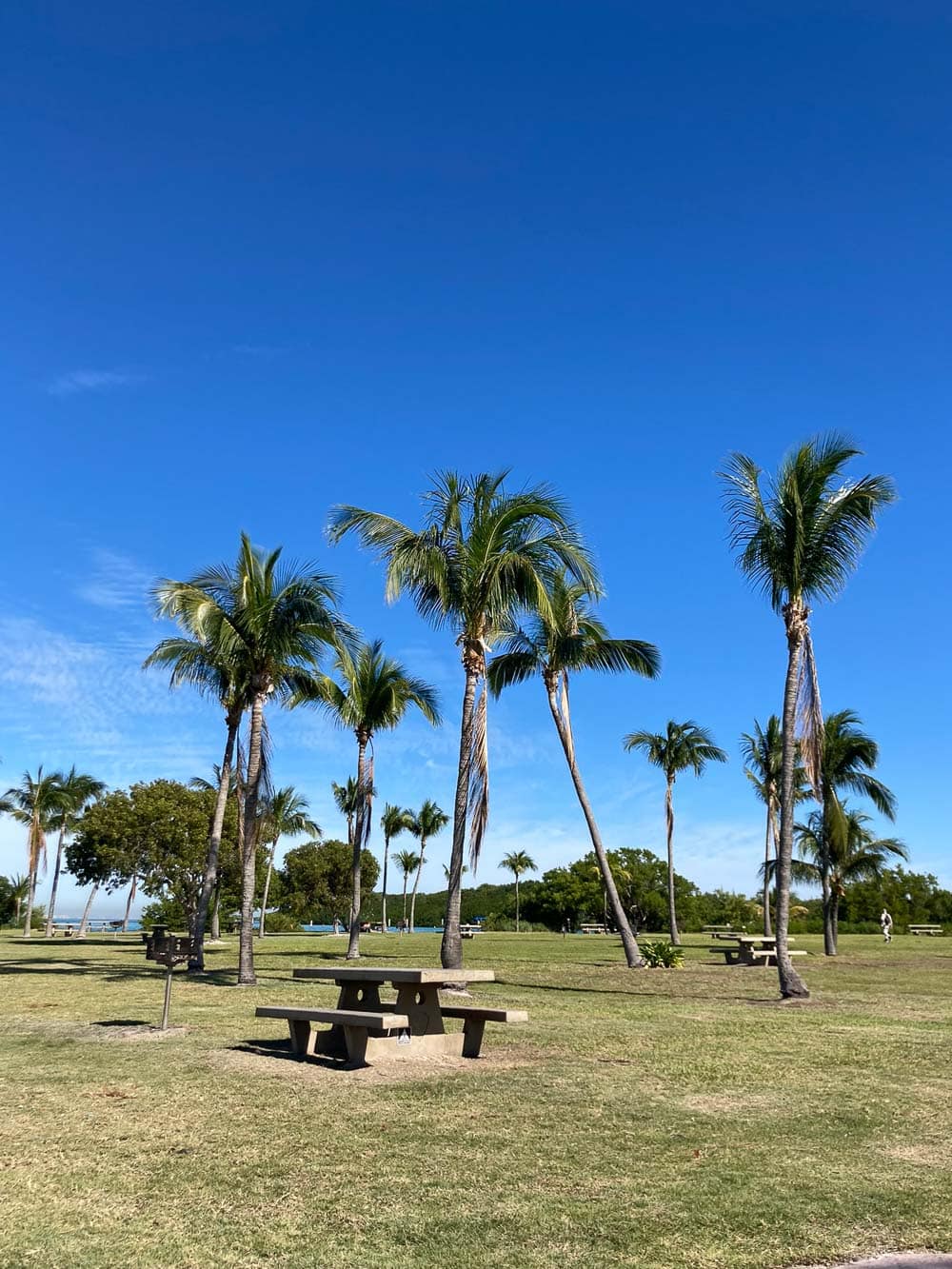
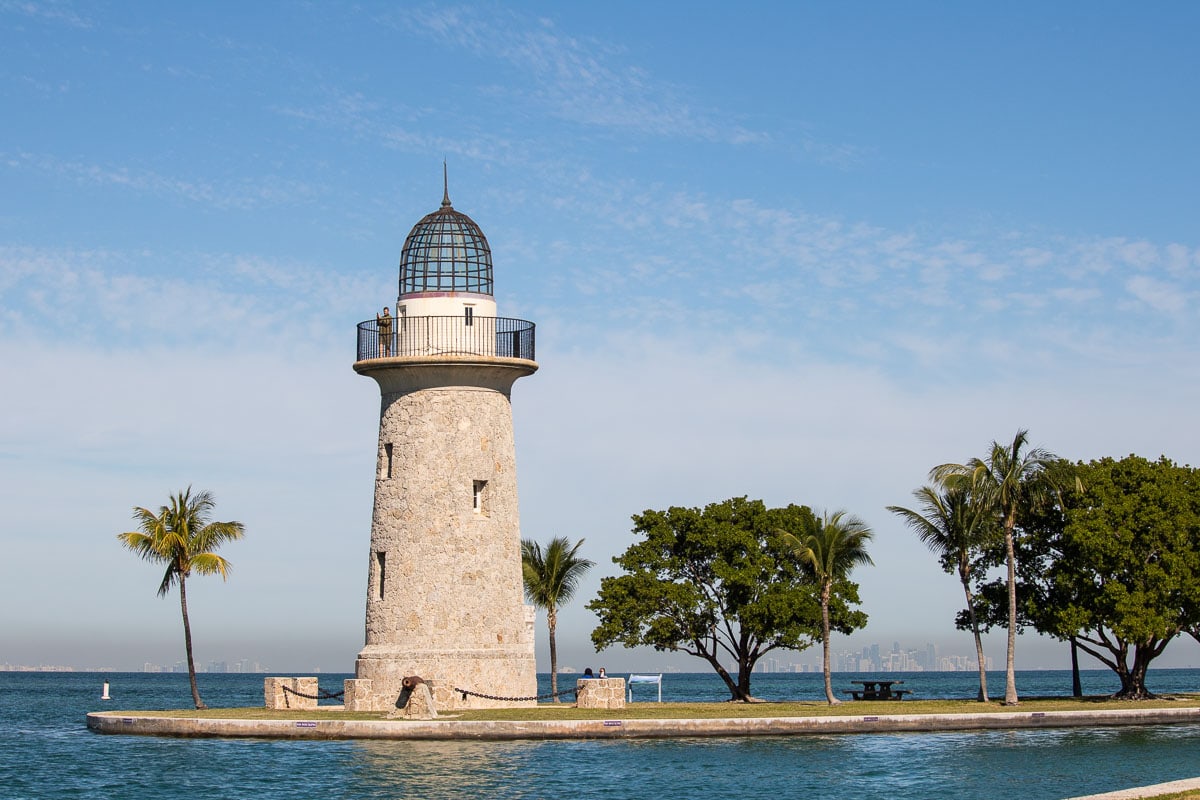
One of only two campgrounds in Biscayne National Park—both of which are located on a key—Boca Chita Campground offers one of the greatest camping experiences in Florida.
This wonderful, yet relatively basic, campground is on Boca Chita Key in Biscayne Bay, which is accessible only by boat. Its tent sites are scattered across the lawn in the middle of this tiny island, dotted with palm trees.
There are picnic tables and grills, too, as well as restrooms. Note, however, that there are no showers, sinks, or drinking water on Boca Chita Key.
This means that an overnight camping trip to Boca Chita Key requires you to bring plenty of water yourself, along with all food, snacks, cooking gear, and everything else you think you might need.
Other main features include the famous Boca Chita Lighthouse and Observation Deck, a short hiking trail, and a historic picnic pavilion.
There are a couple of small sandy beaches on the north shore of the island, mere steps away from the Boca Chita Campground.
Sites are available on a first-come, first-served basis. You can learn more about camping on Boca Chita Key in Biscayne National Park on the park’s website.
8. Kalaloch Campground, Olympic National Park (Washington)

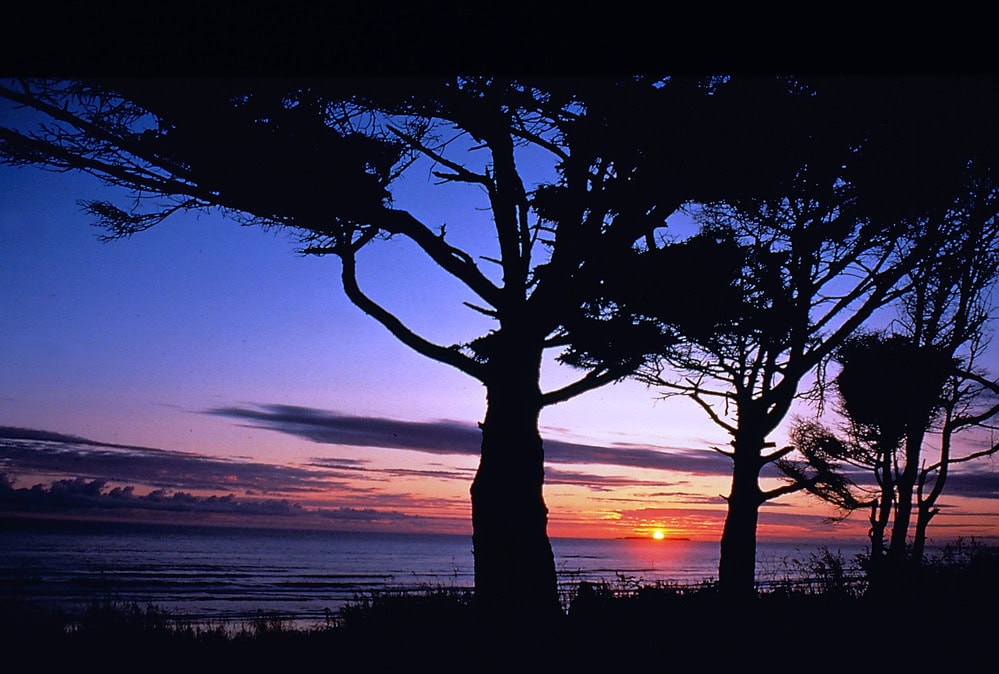
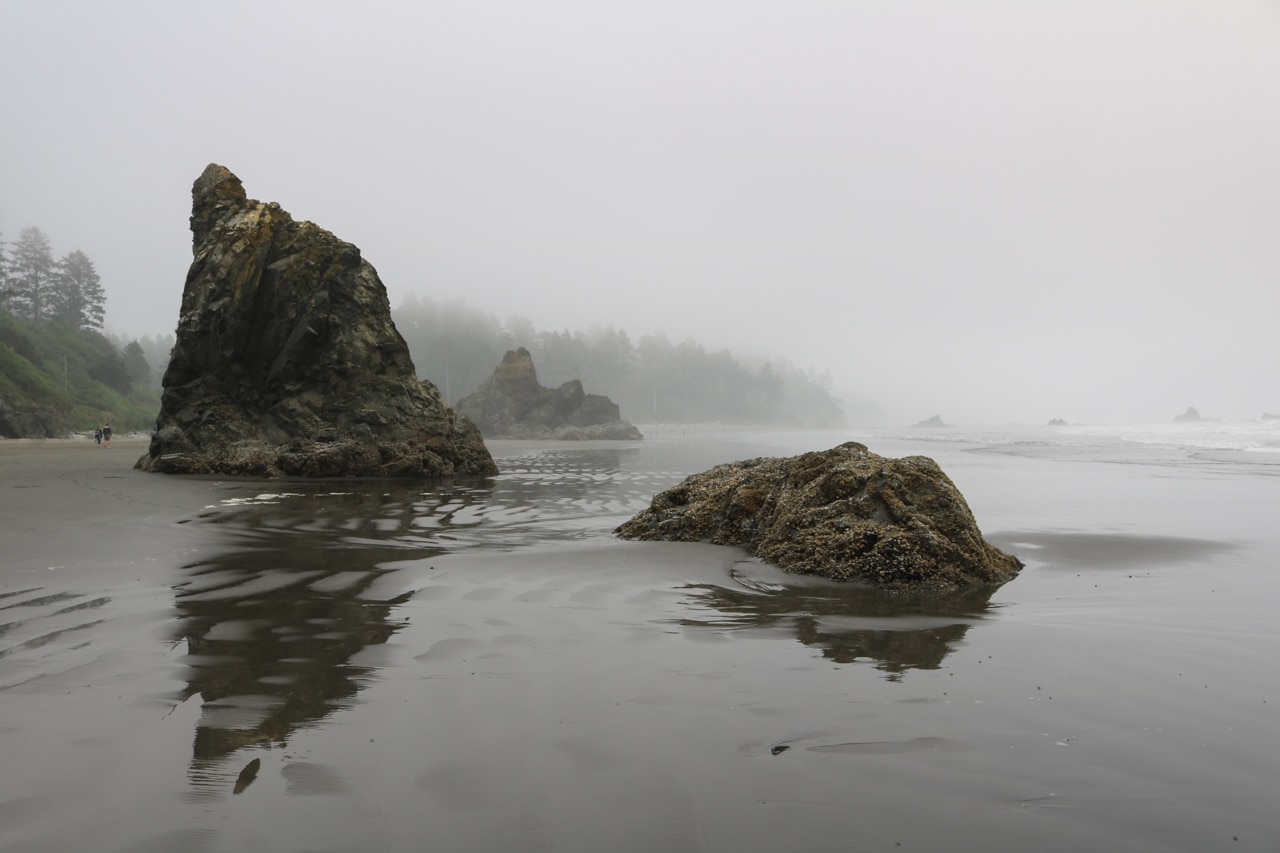
In the southwestern corner of extraordinary Olympic National Park lies Kalaloch Campground. This oceanside campground sits on a high bluff overlooking the Pacific Ocean, with some sites offering spectacular views of the water and coastline.
Although there are no sites directly on the beach, there is easy beach access from the campground. There are both tent and RV sites, while other amenities include fire pits, picnic tables, potable water, and accessible restrooms. The Kalaloch Lodge is a quick walk away.
From Kalaloch Campground, you’ve got access to Kalaloch Beach and the Kalaloch Creek Nature Trail. Other beaches in the area include renowned Ruby Beach, South Beach, and Beaches 1, 2, 3, and 4.
Kalaloch is on Highway 101, between the stunning Quinault Rain Forest, the underrated Queets Rain Forest, and the world-famous Hoh Rain Forest.
Reservations are required from late-May through late-September. Sites are available on a first-come, first-served basis during the rest of the year. You can reserve a campsite on Recreation.gov.
7. Piñon Flats Campground, Great Sand Dunes National Park (Colorado)
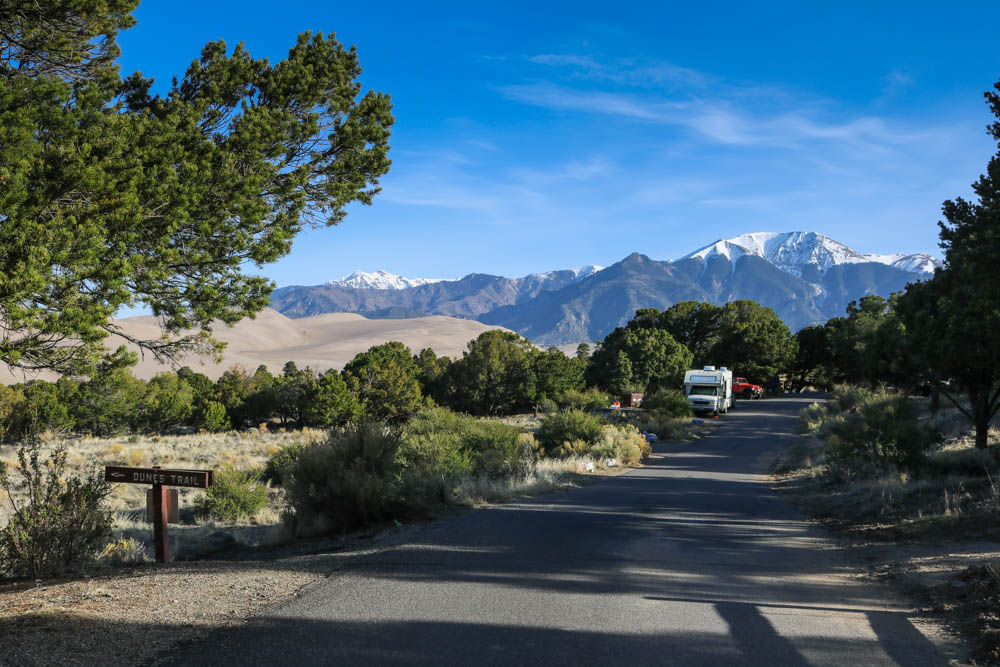
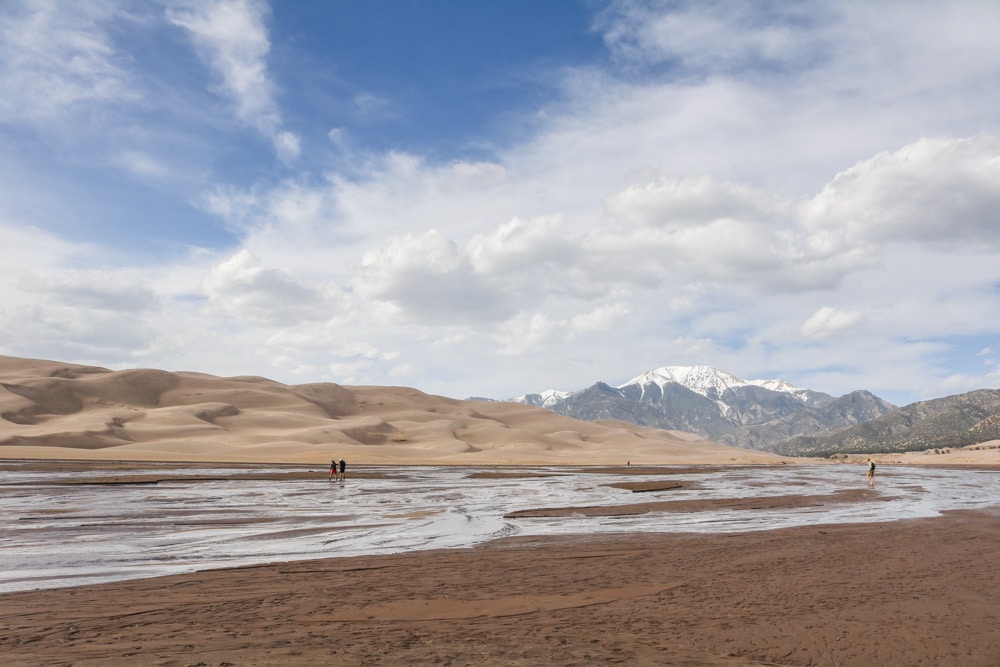
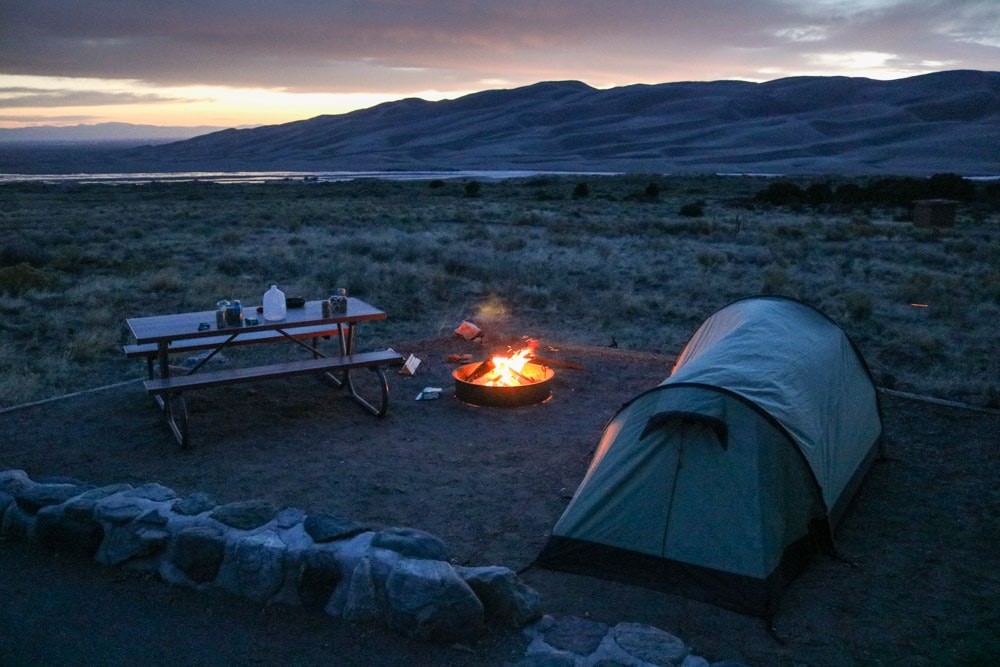
This is one of the national park beach campgrounds that may seem like a stretch to some people. Let me explain, though!
Piñon Flats Campground, even though it’s in the mountains of southern Colorado, does offer access to both flowing water and sand.
The remarkable dunes of Great Sand Dunes National Park, which are visible from the campground and reachable via the Dunes Trail, are the tallest in all of North America.
Each winter and spring, Medano Creek flows in between the campground and the sand dunes, providing opportunities for wading, splashing, and occasionally even floating.
During peak waterflow, which is usually in early-June, the banks of Medano Creek are lined with people enjoying this remarkable phenomenon in the southern Rocky Mountains.
In the Great Sand Dunes themselves, you can go hiking, sandboarding, and sledding. Additionally, night hikes in the sand dunes can be absolutely unforgettable, too.
Piñon Flats Campground is open from April through October. While reservations are not required, they are highly recommended, especially during the busy months of May, June, July, and August. You can reserve a spot on Recreation.gov.
6. Scorpion Canyon Campground, Channel Islands National Park (California)
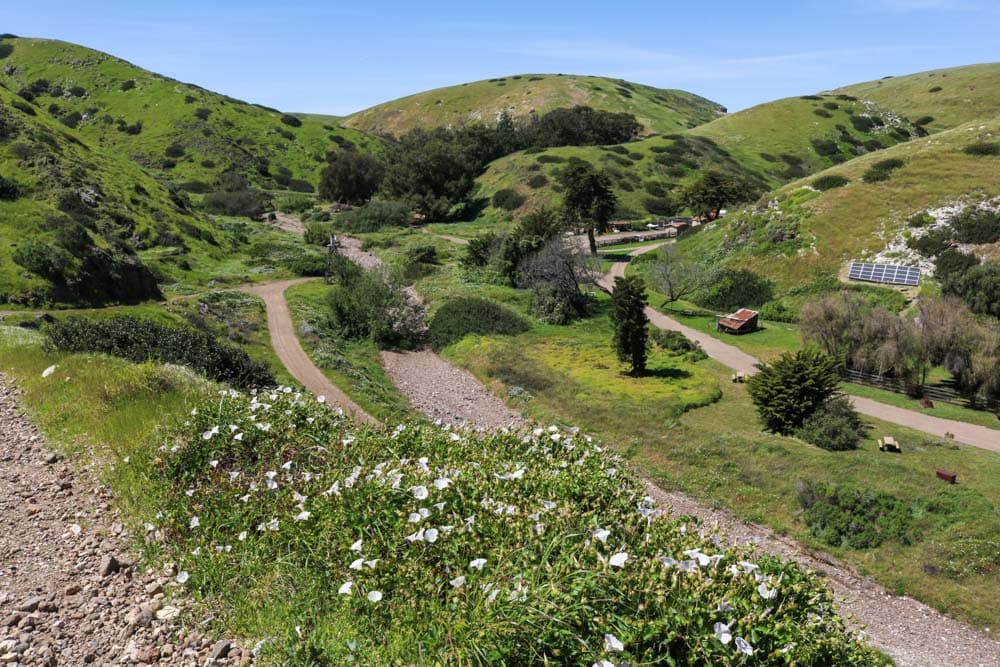
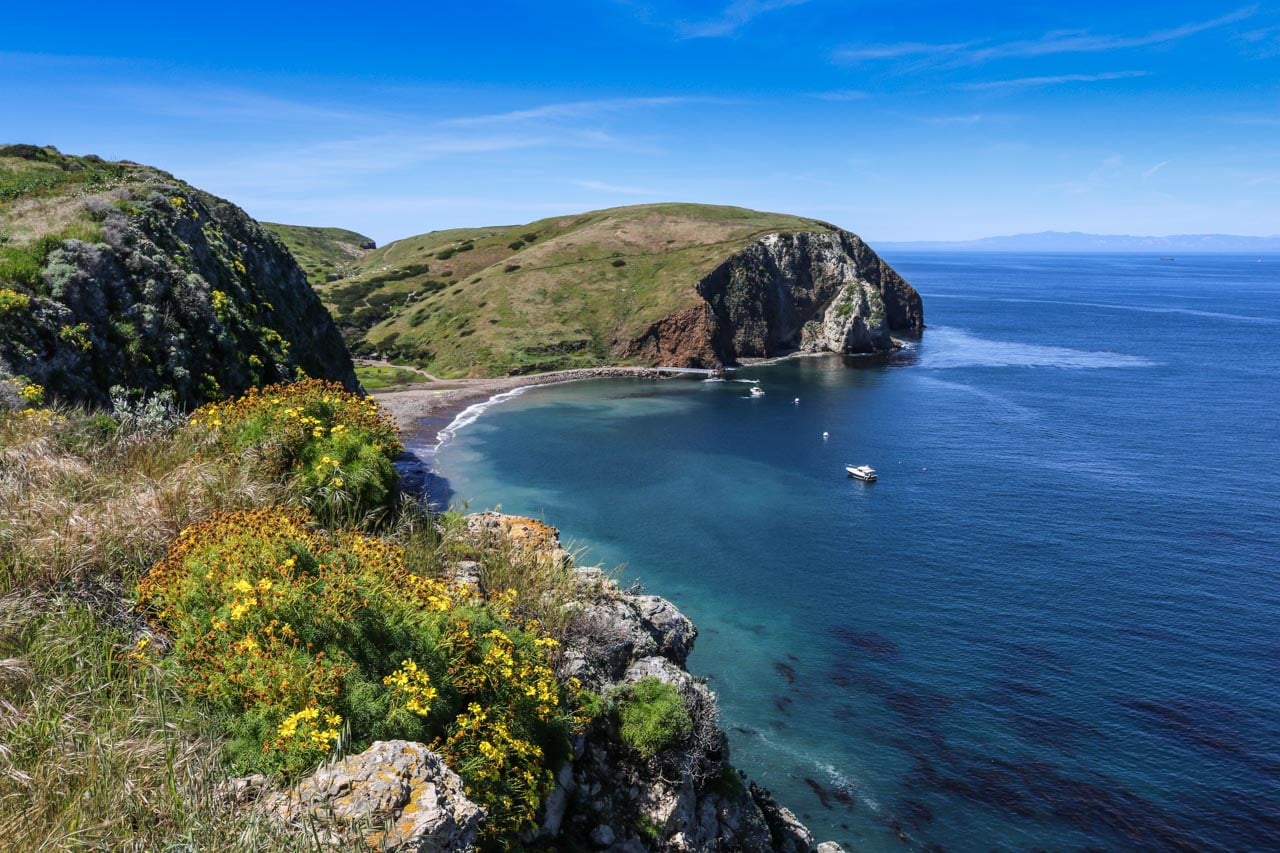
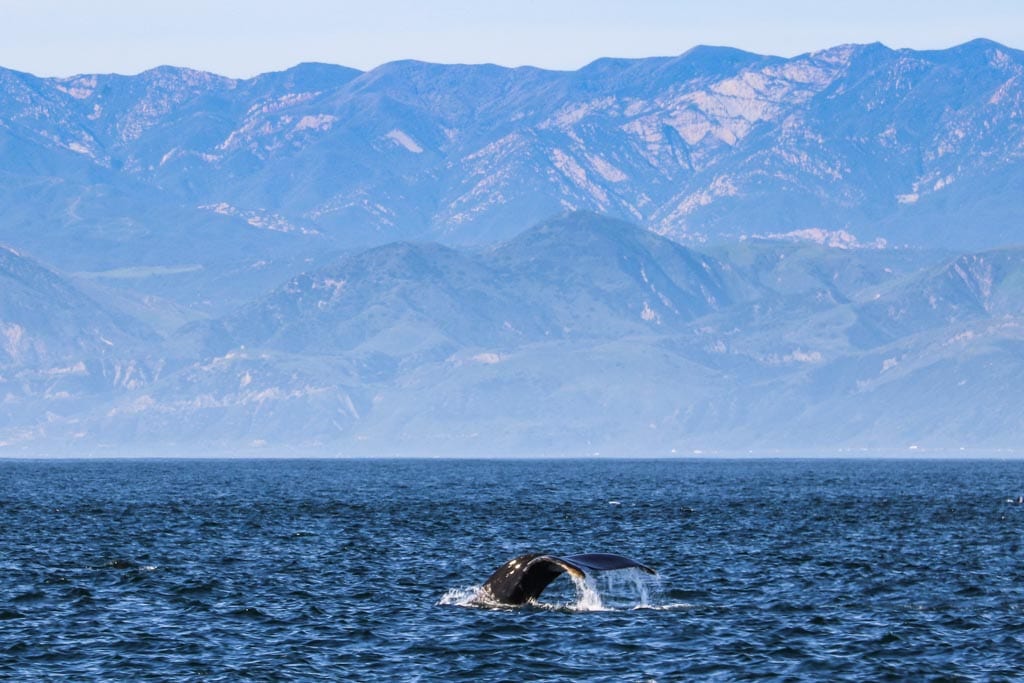
You can camp on all five islands that make up Channel Islands National Park. Arguably the most popular of those campgrounds is Scorpion Canyon Campground on Santa Cruz Island.
It is situated on the eastern part of the island, a short 0.5-mile hike from the pier and sheltered from ocean winds by its topography. “Fantastic ocean views and relaxing beach time is practically guaranteed at Scorpion Canyon Campground,” the page on Recreation.gov reads.
Note that there’s no transportation on the island, so you need to carry all your gear to the campsite yourself. Amenities include food storage boxes, picnic tables, potable water, and a pit toilet.
There’s easy beach access, as well as a few hiking trails to explore. Wildflower and wildlife viewing are popular activities, too, as are swimming, sunbathing, snorkeling, scuba diving, and sea kayaking.
All in all, the feeling of remoteness combined with tons of recreational opportunities makes this one of the best ocean beach campgrounds in the national parks.
Island Packers organizes daily boat trips to Santa Cruz Island from Ventura, California.
Reservations are required year-round for Scorpion Canyon Campground and can be made on Recreation.gov.
Top 5 Coolest Campgrounds in the National Parks
5. Colonial Creek South Campground, North Cascades National Park Service Complex (Washington)
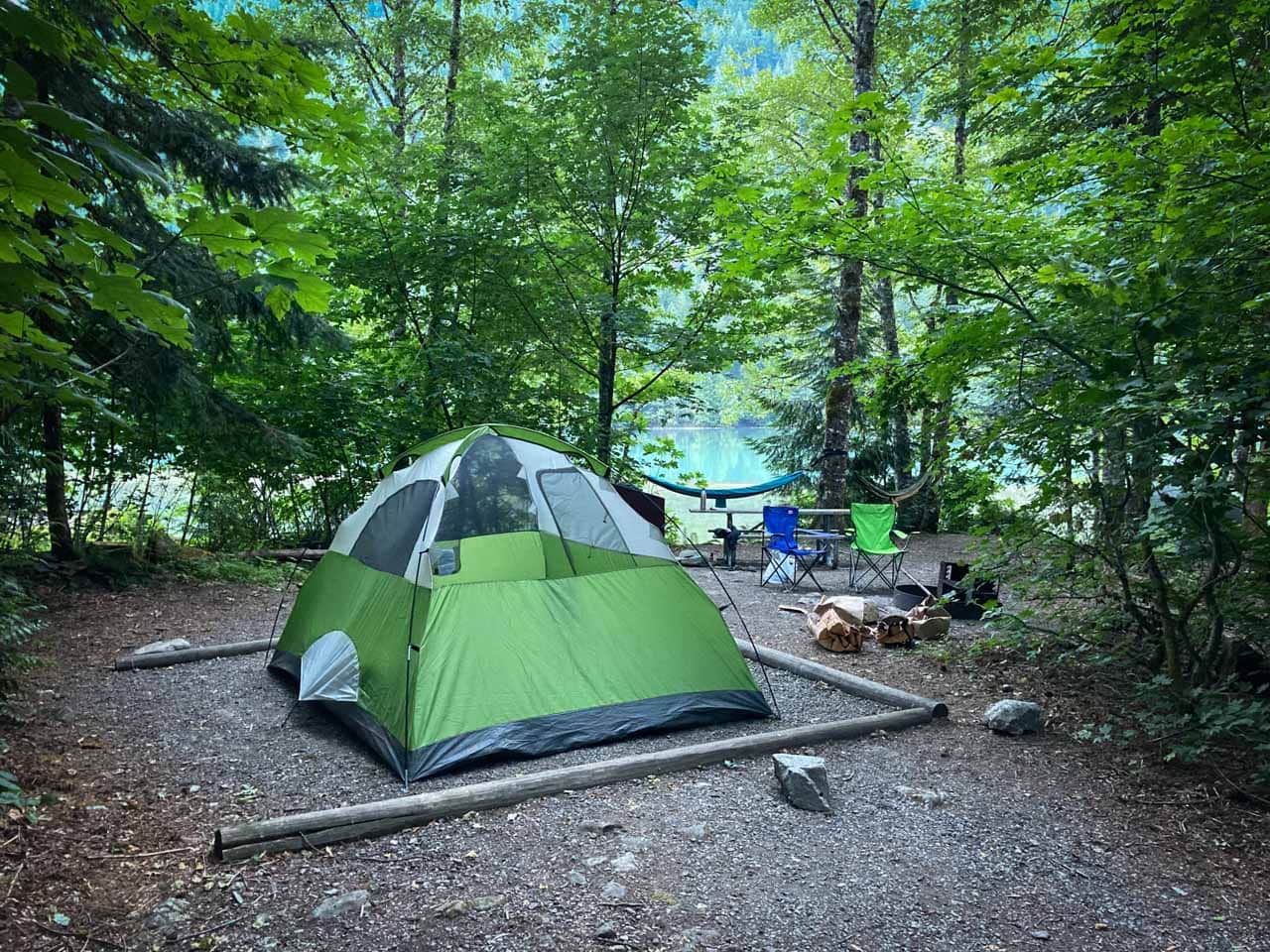
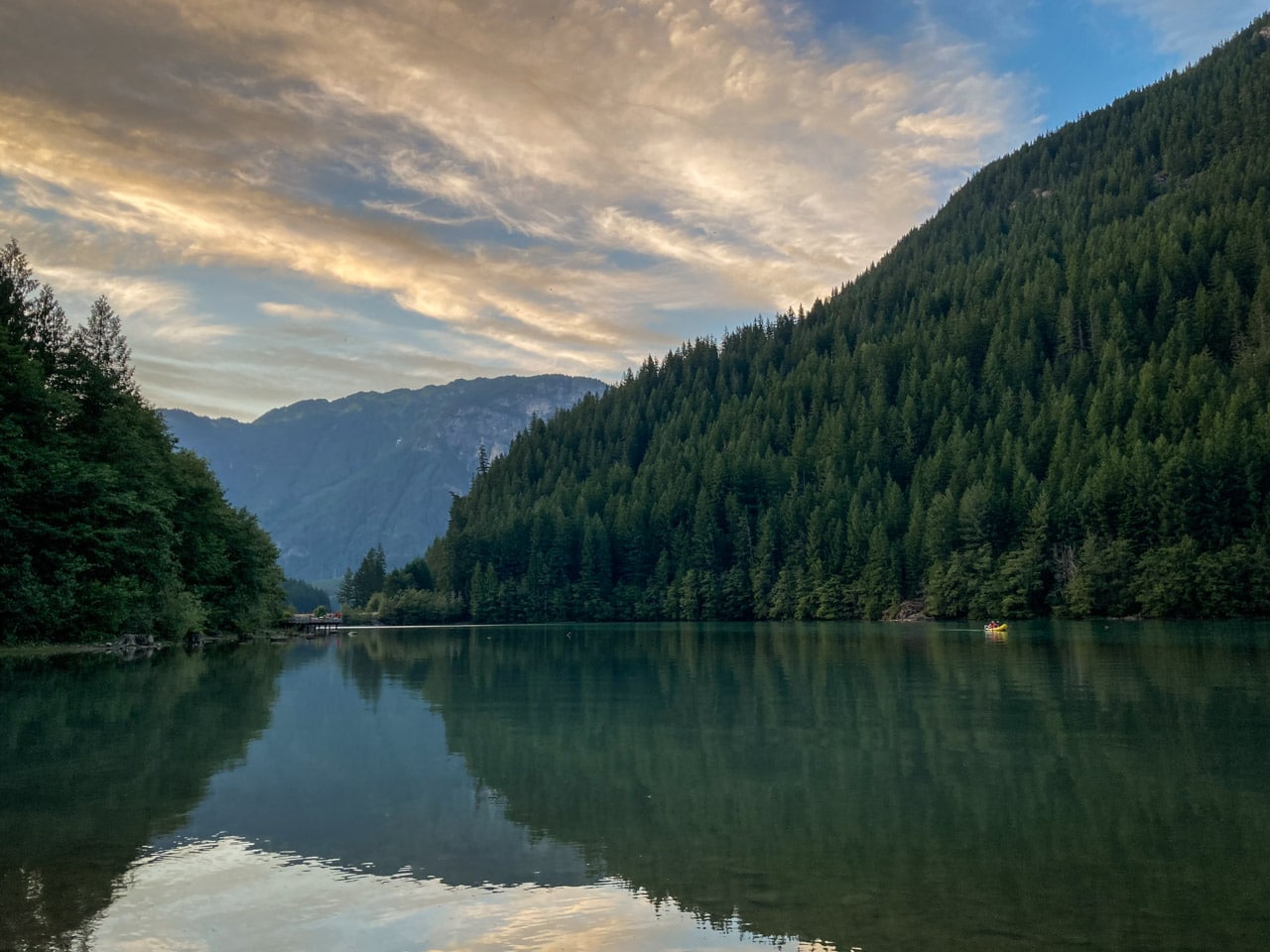
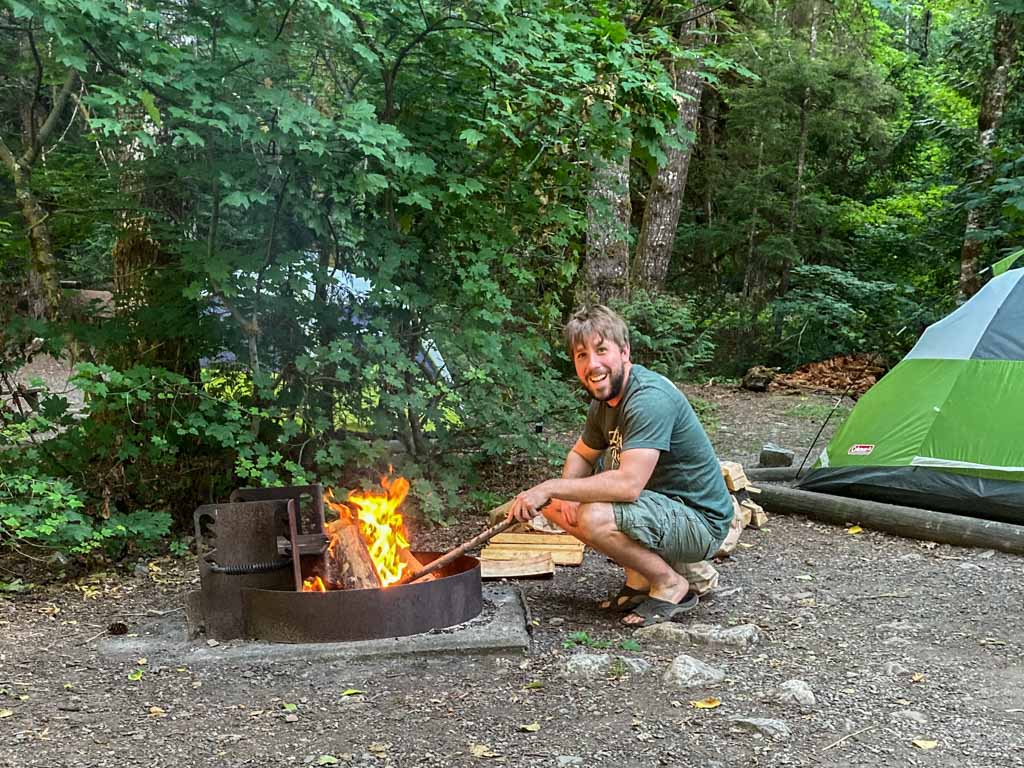
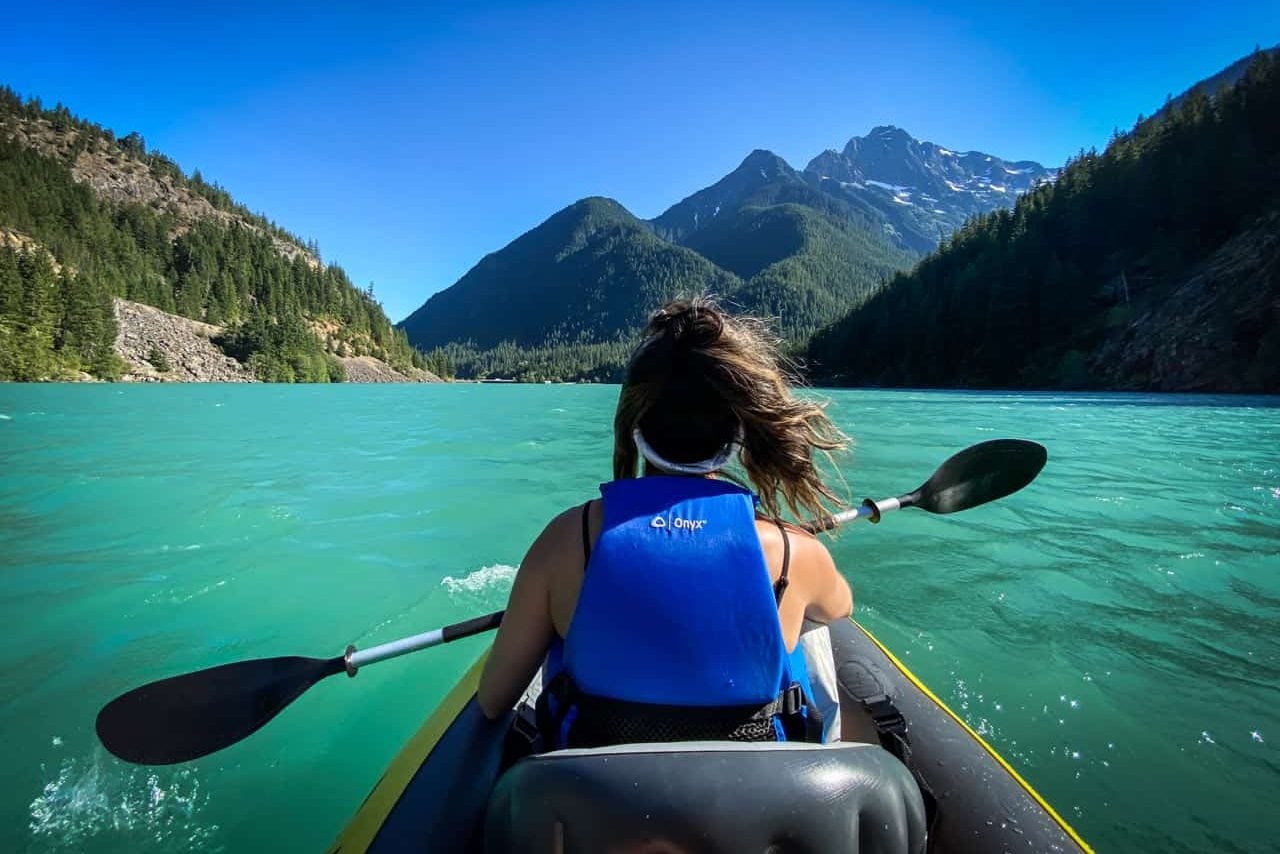
As far as lakeside beach campgrounds in national parks go, Colonial Creek South Campground is by far my favorite. This relatively remote campground is on State Route 20 in Ross Lake National Recreation Area, which is part of the greater North Cascades National Park Service Complex.
It sits on the southwest shore of Diablo Lake, one of the most famous landscapes in the Pacific Northwest. During the busy summer season, people come here to see the iconic blue glacial water of the lake, go boating, and explore the spectacular North Cascades.
At Colonial Creek South Campground, there’s direct lake access—some sites are literally steps from the sandy shoreline—a boat ramp, and hiking trails. Potable water is available seasonally.
Although reservations are not required for Colonial Creek South Campground, you are strongly encouraged to book your campsite way in advance, particularly if you’re planning on visiting in summer. You can reserve a site on Recreation.gov.
4. Bartlett Cove Campground, Glacier Bay National Park (Alaska)
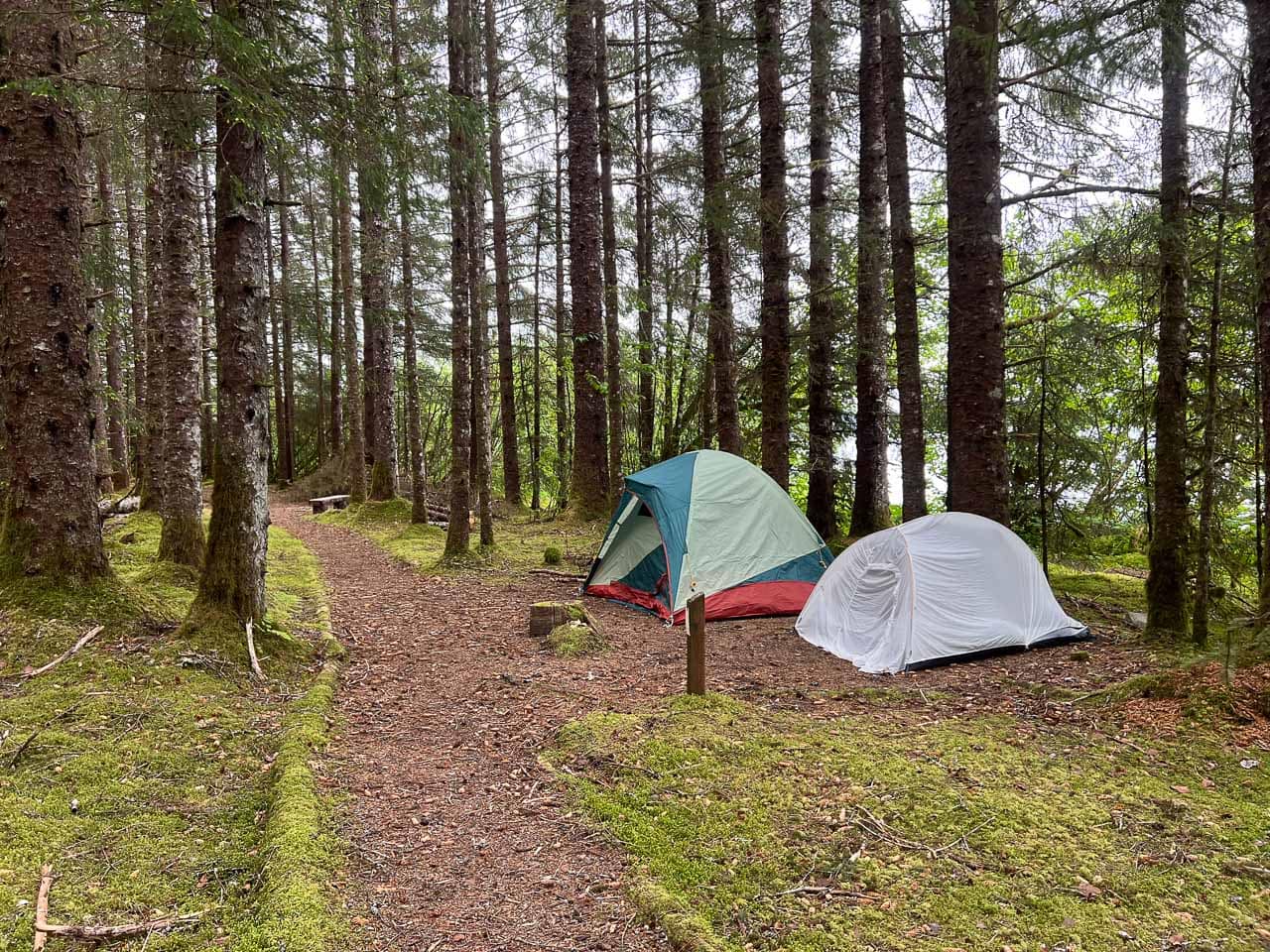
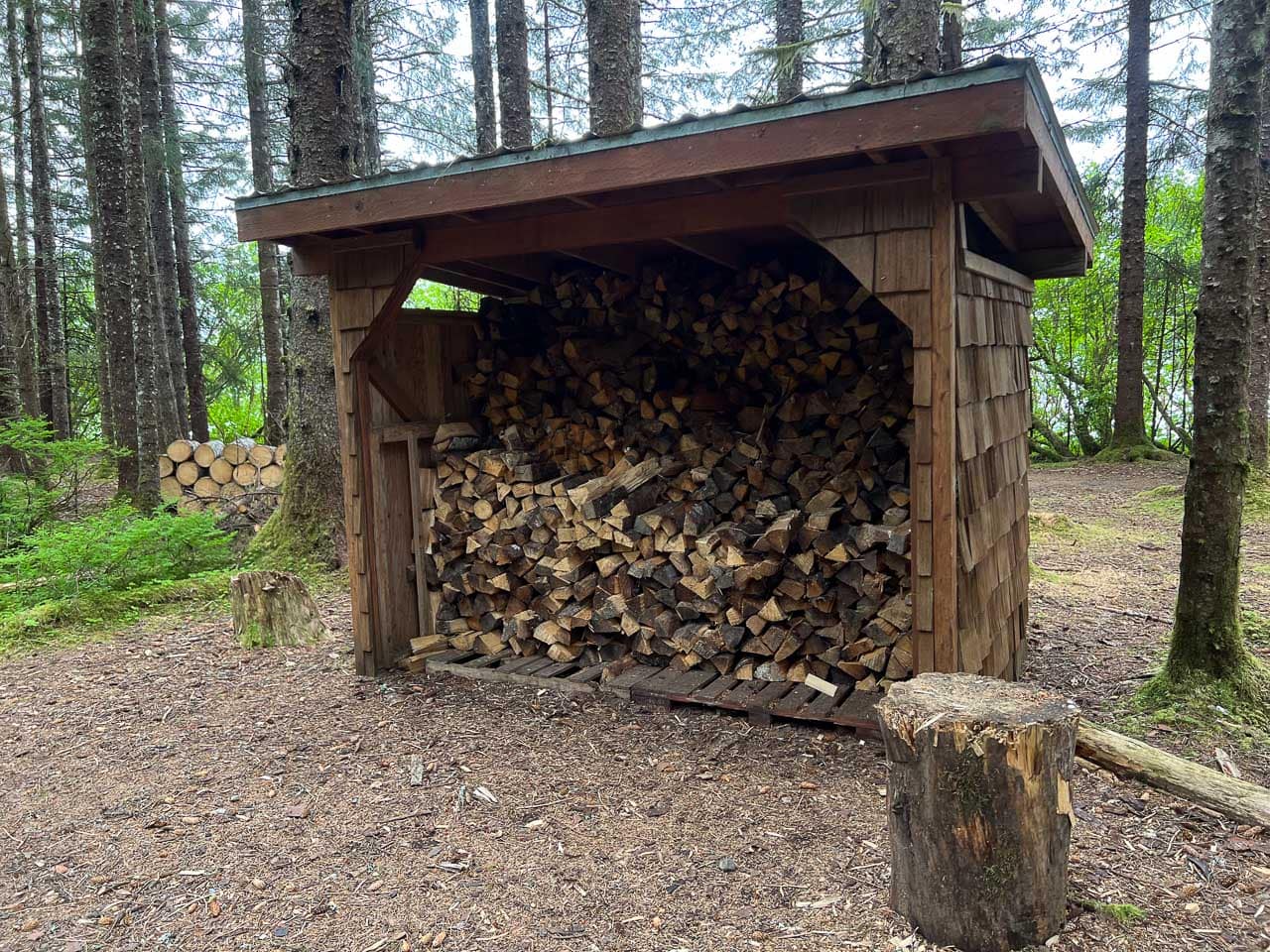
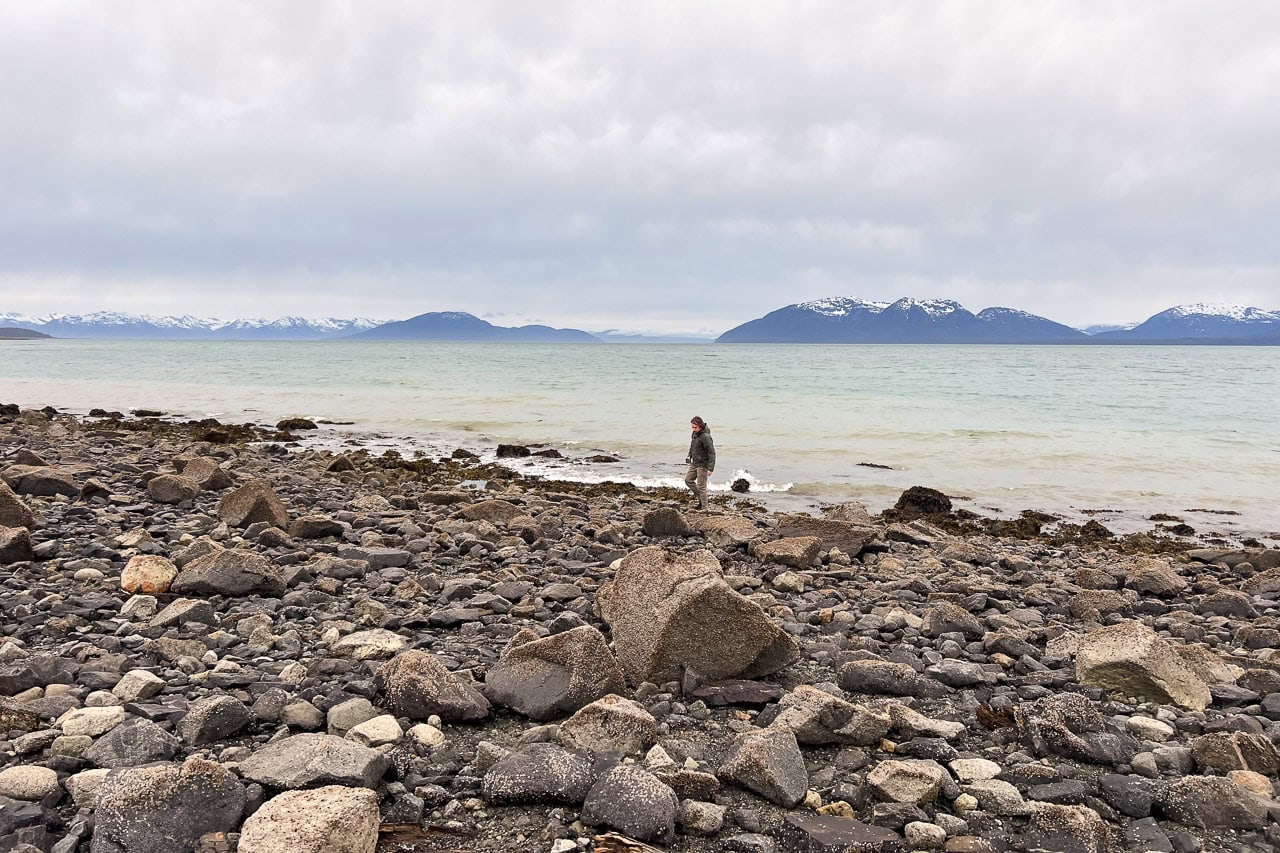
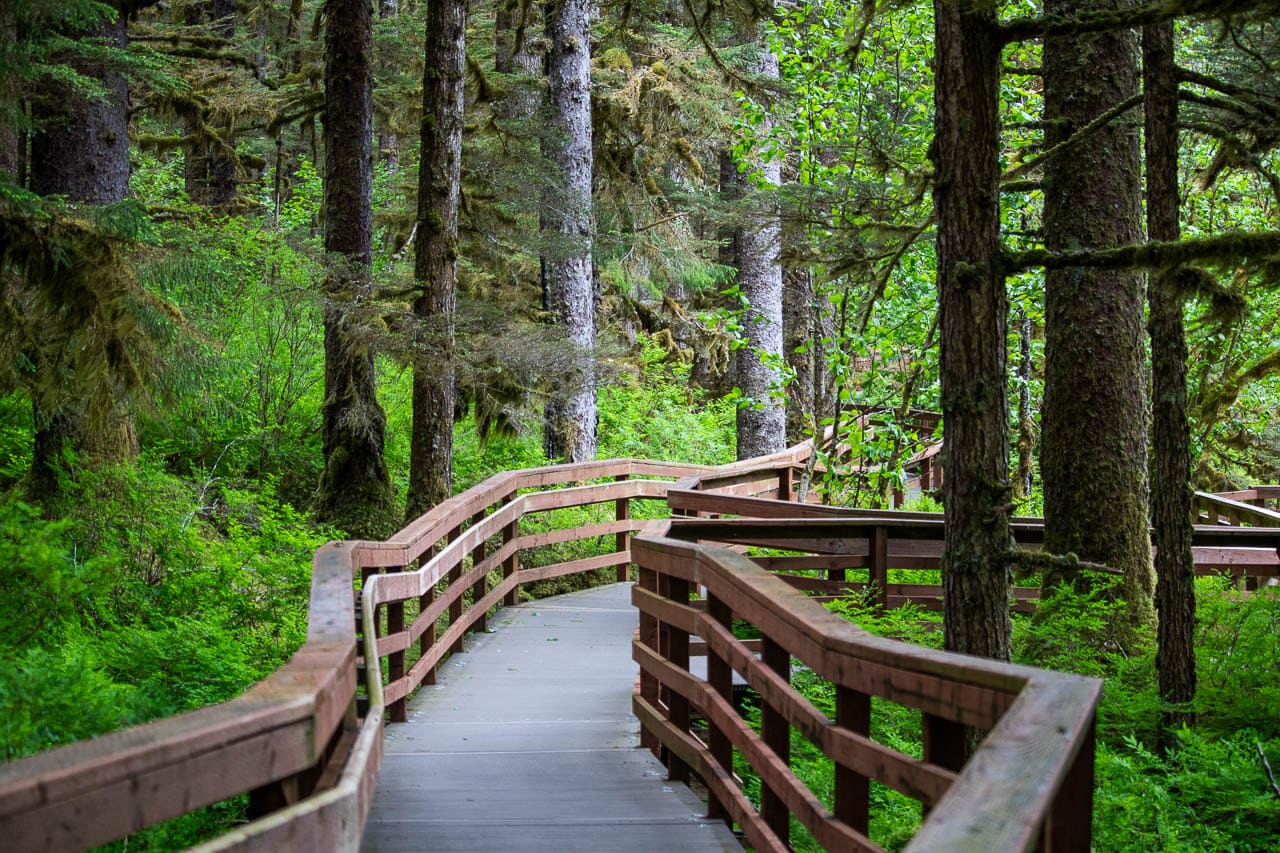
Yes, there’s a great beach campground in the national parks of Alaska, too!
Glacier Bay National Park’s only frontcountry campground is located in Bartlett Cove, which is the only part of the park that’s accessible by road.
However, even though you can get to Bartlett Cove by car, getting to the campground requires a short hike on the Beach Trail from the Glacier Bay Lodge. This walk-in campground sits in a gorgeous temperate rain forest, along the rocky beach of Bartlett Cove.
Campers can explore the spectacular Alaskan coastline, hike the Forest Trail, learn about native Tlingit culture, enjoy dinner at the lodge, and join a Glacier Bay boat tour (the ultimate highlight of this remote national park). Another popular pastime is watching wildlife, which ranges from harbor seals and orcas to coastal brown bears, moose, bald eagles, and other birds.
This is a primitive campground with amenities like bear-proof storage boxes, a fire pit on the beach, warming shelter, and composting toilets. Firewood is available free of charge.
Camping at Barlett Cove Campground is free and first-come, first-served. You need to get a campground permit at the Visitor Information Station, which is at the boat dock. Campers must take a brief orientation before camping, too.
3. Garden Key Campground, Dry Tortugas National Park (Florida)
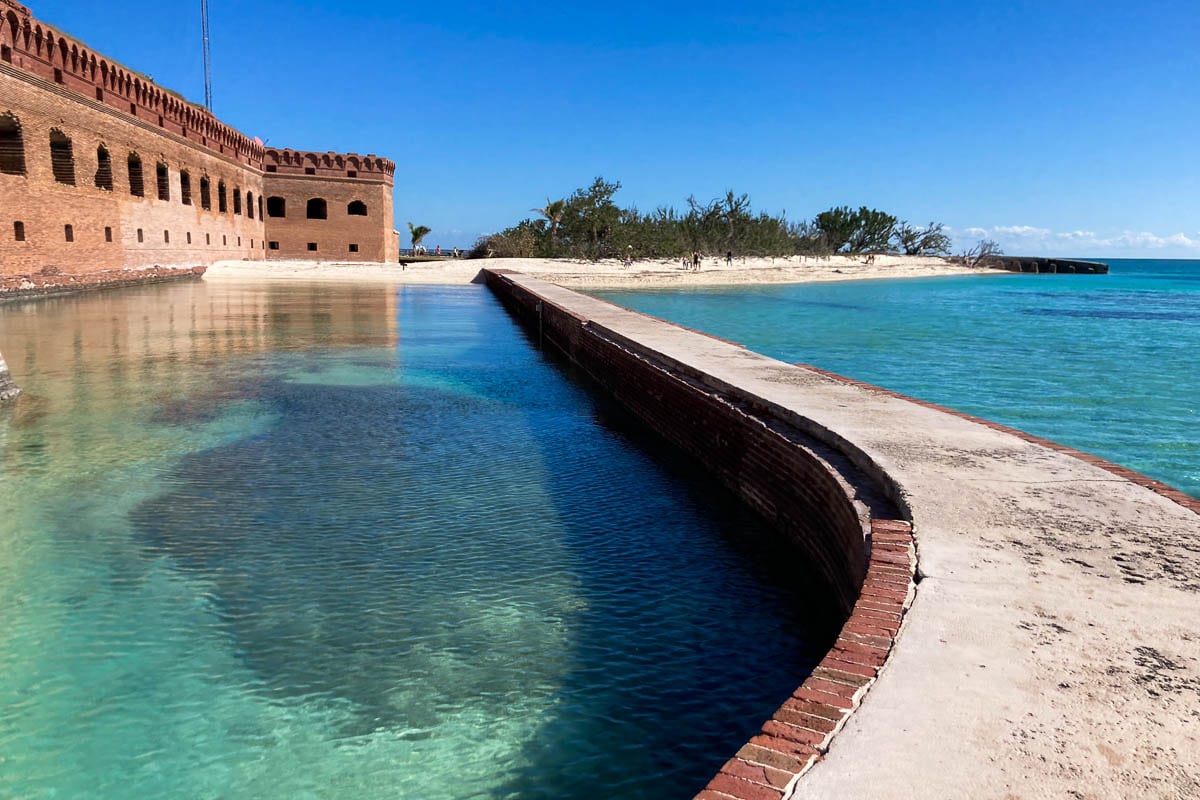
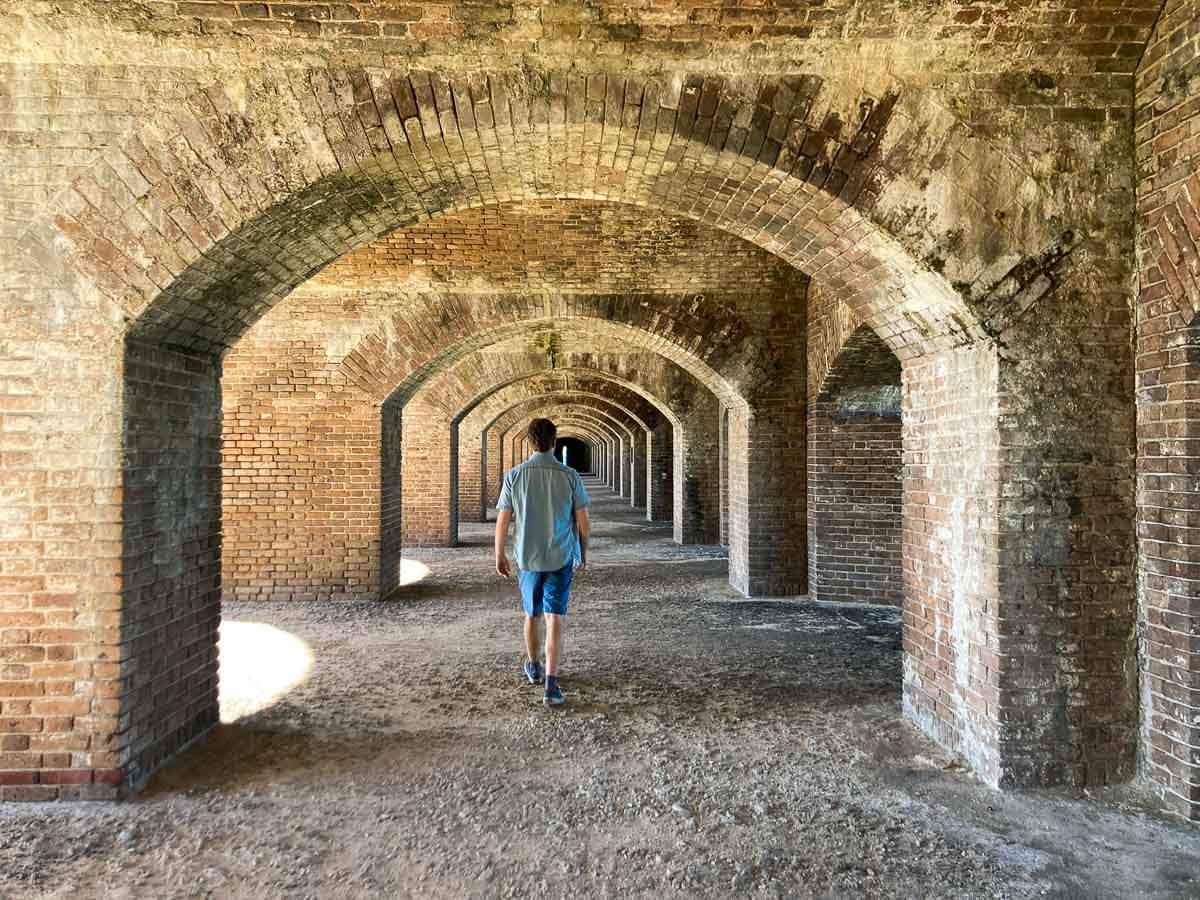
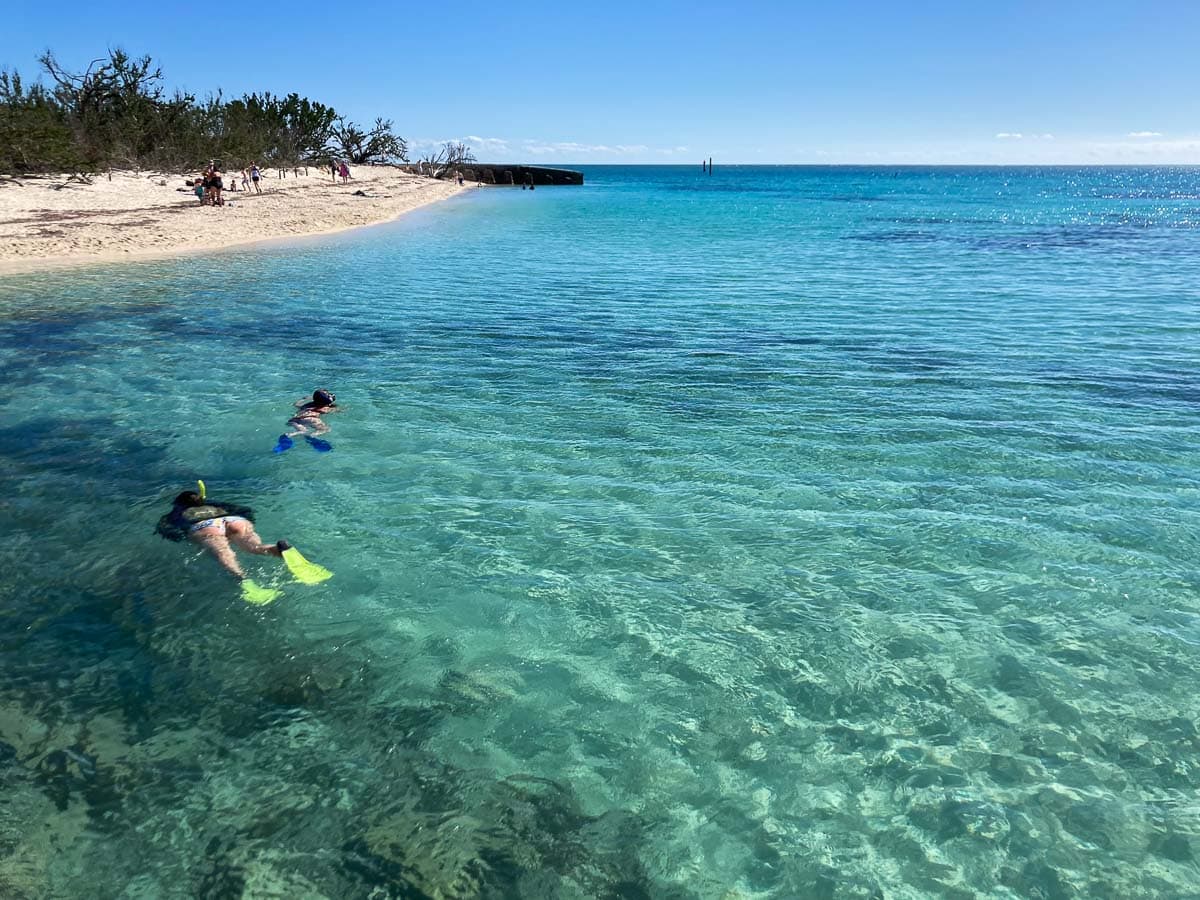

The second-largest island in Dry Tortugas National Park, Garden Key is by far the most developed. This is where nearly all visitors to the park go, whether it’s by catamaran, seaplane, or private boat.
The star attraction of Garden Key is historic Fort Jefferson, one of the world’s largest brick buildings. Right next to the fort lies the national park’s only campground: Garden Key Campground.
“Camping at Garden Key is an incredible experience with amazing star gazing, snorkeling, sunsets, and more!” the park says on its website. Visitors are advised to prepare their camping trip properly, though.
This campground is quite primitive and amenities are limited to picnic tables, composting toilets, and grills. There is no potable water on the island, so all campers must bring their drinking water, as well as all other gear and provisions themselves.
Once you’ve pitched your tent just above South Swim Beach, you can enjoy this stunning sandy beach, go snorkeling, enjoy sunsets, and explore the fort.
Camper transportation to Garden Key is offered on the Yankee Freedom catamaran from Key West, by permitted tour guides, and by private boat. Note that seaplanes do not take campers to Garden Key.
Campers don’t need advance reservations to camp at Garden Key Campground. All sites are assigned on a first-come, first-served basis, but each camper who arrives at Garden Key is guaranteed a site. The biggest challenge when planning a camping trip to Dry Tortugas National Park is getting a reservation for the Yankee Freedom catamaran, which often sells out months in advance.
2. Gold Bluffs Beach Campground, Redwood National and State Parks (California)
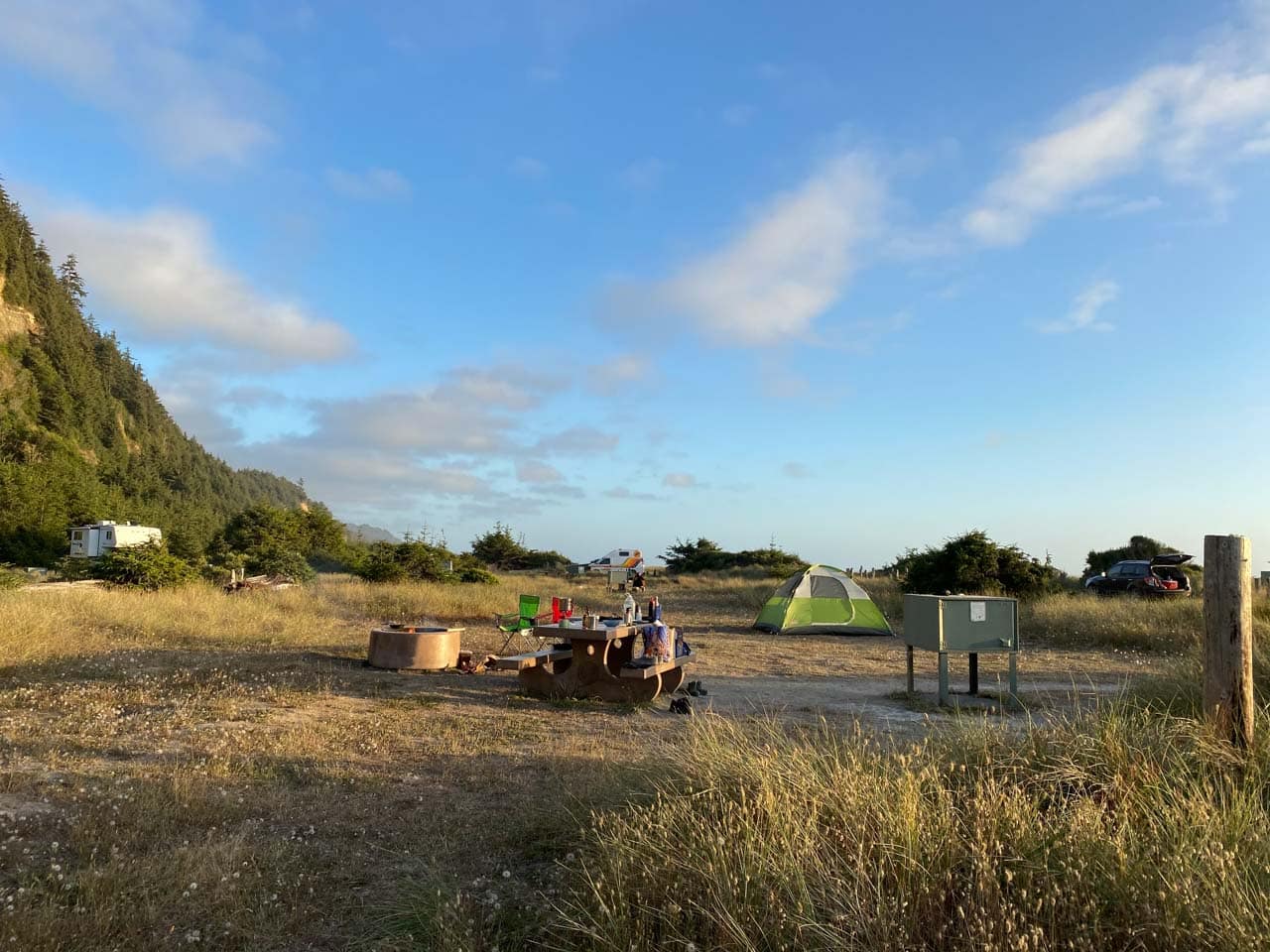
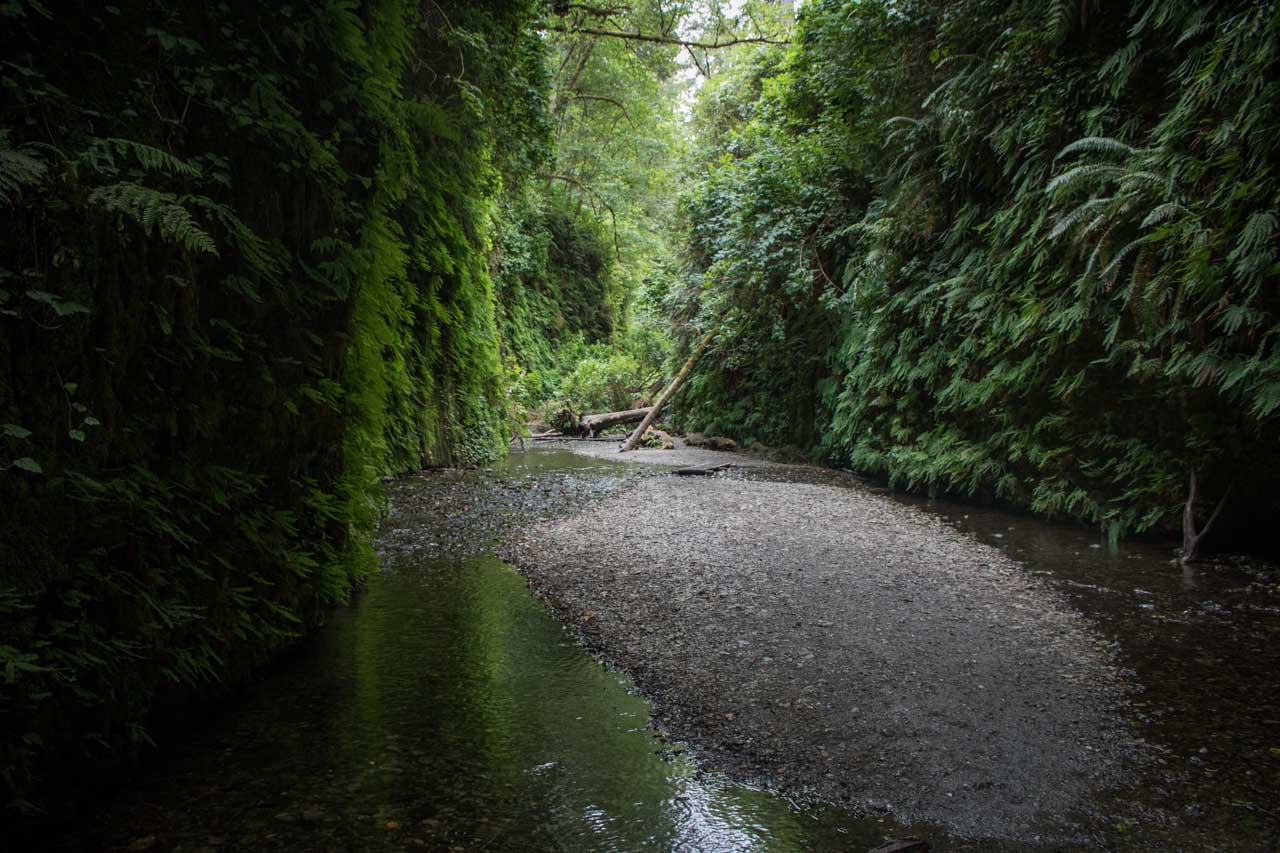
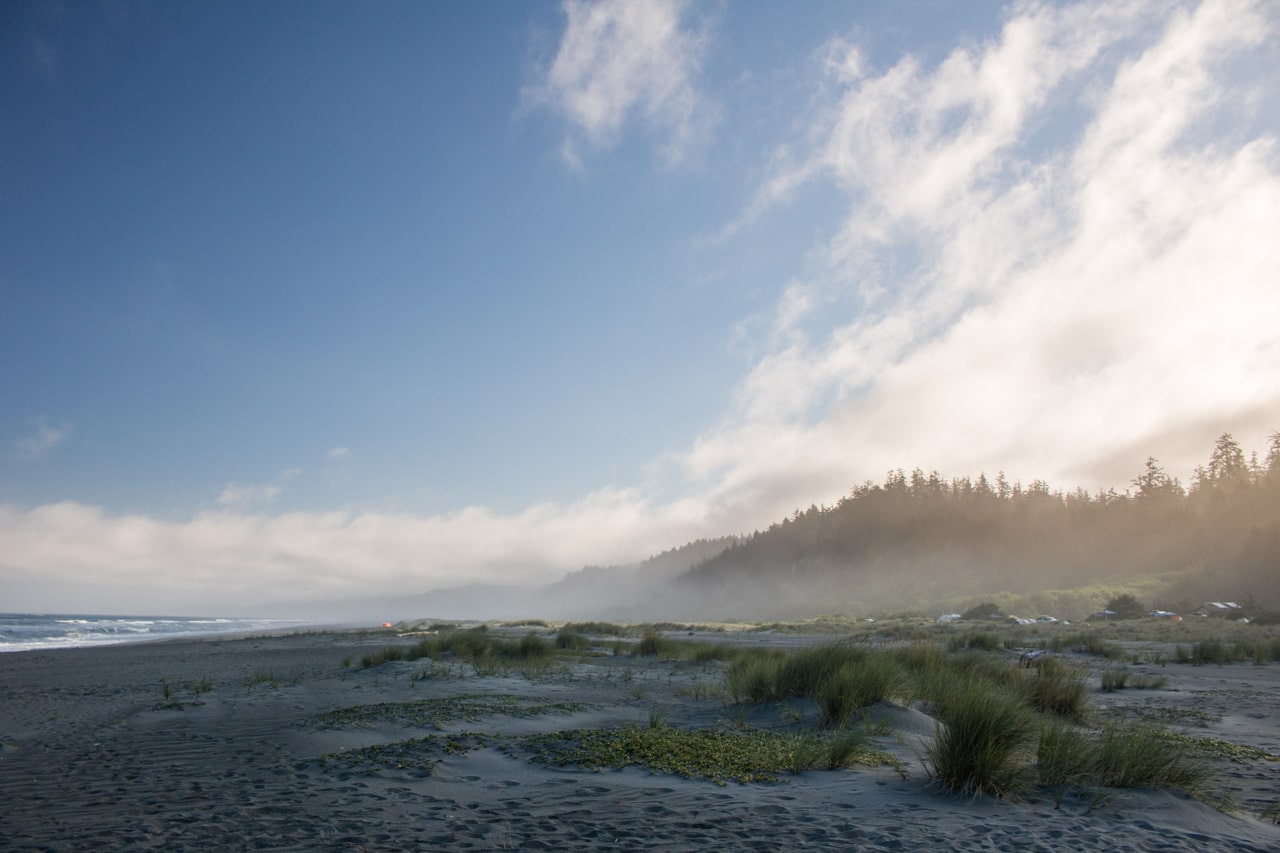
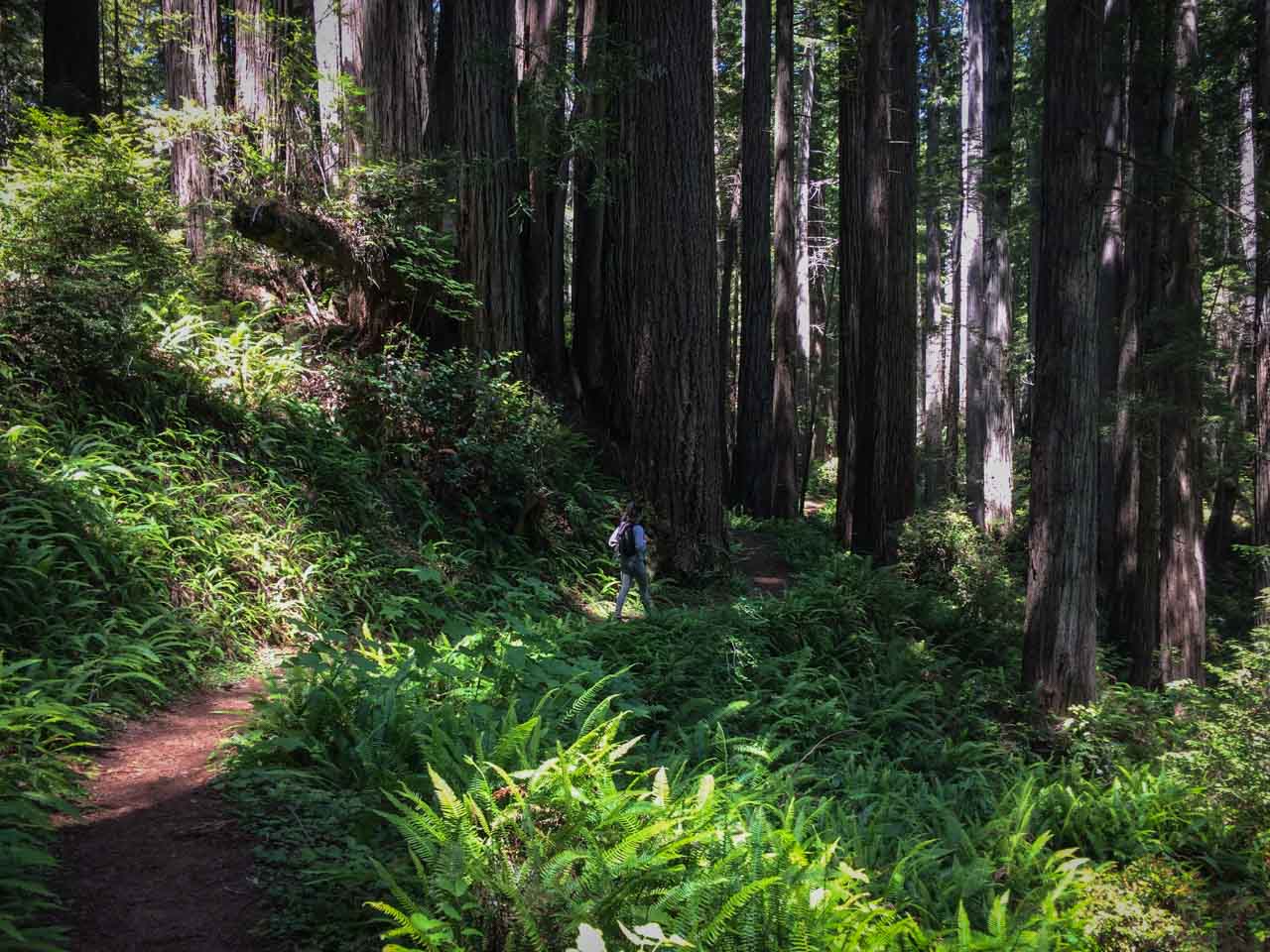
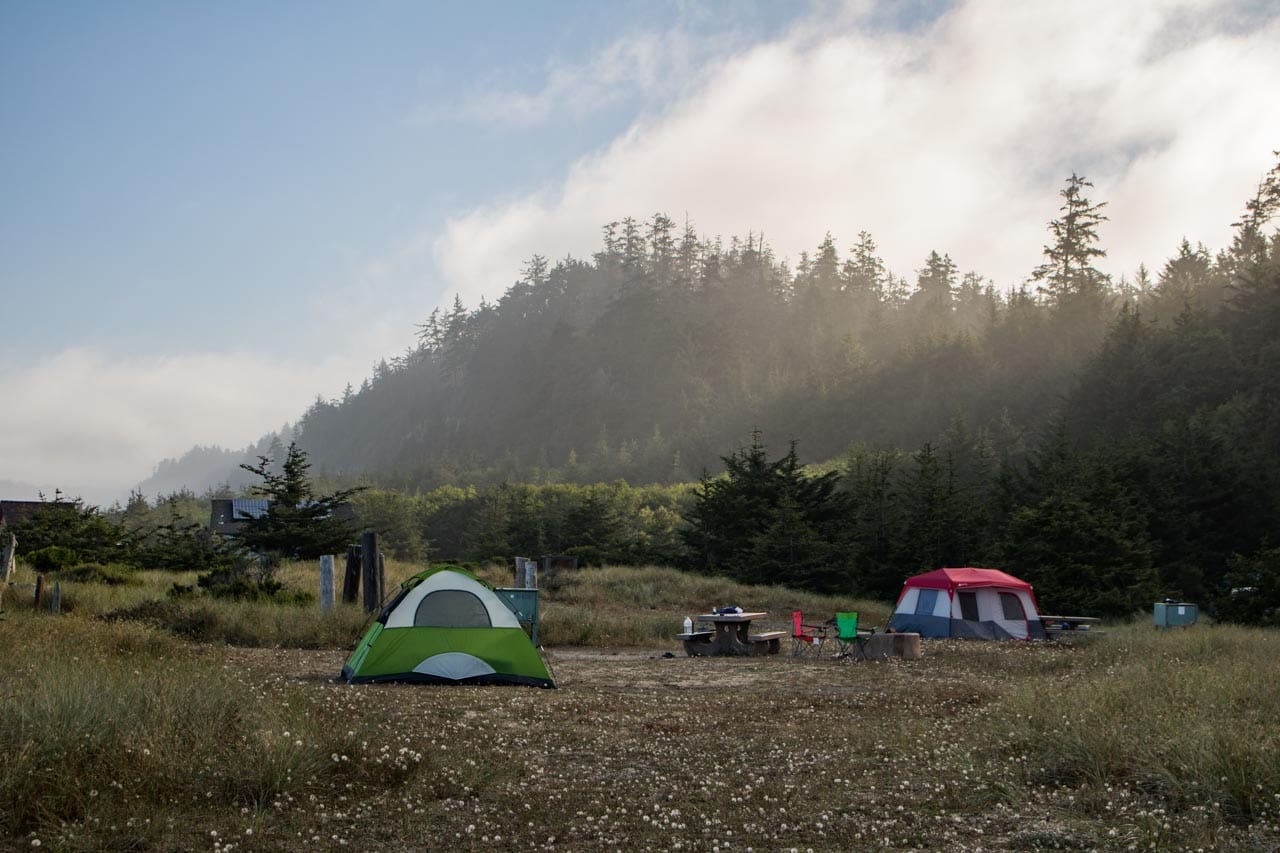
A remote campground in the dunes of Gold Bluffs Beach, this is easily one of my all-time favorite beach campgrounds in the national parks.
It’s located in Prairie Creek Redwoods State Park, about 6 miles up unpaved Davison Road, and offers visitors the chance to camp on the wild Pacific coast and amid Roosevelt elk and other wildlife.
The secluded sandy beach is literally a minute’s walk from the campsites, while redwoods top tall cliffs in the background.
From this campground, you can also walk to gorgeous Fern Canyon and access the excellent Miner’s Ridge Trail, one of the best hikes in the Redwood National and State Parks Complex. The Coastal Trail runs right through the campground as well.
As far as facilities go, there are solar showers and flush toilets, barbecues and fire pits, picnic tables and food lockers—more than enough for a remote camping adventure with some basic luxuries.
Gold Bluffs Beach Campground is extremely popular from late-spring through early-fall. Reservations are highly recommended and can be obtained on the California state parks website.
1. Cinnamon Bay Beach and Campground, Virgin Islands National Park (U.S. Virgin Islands)
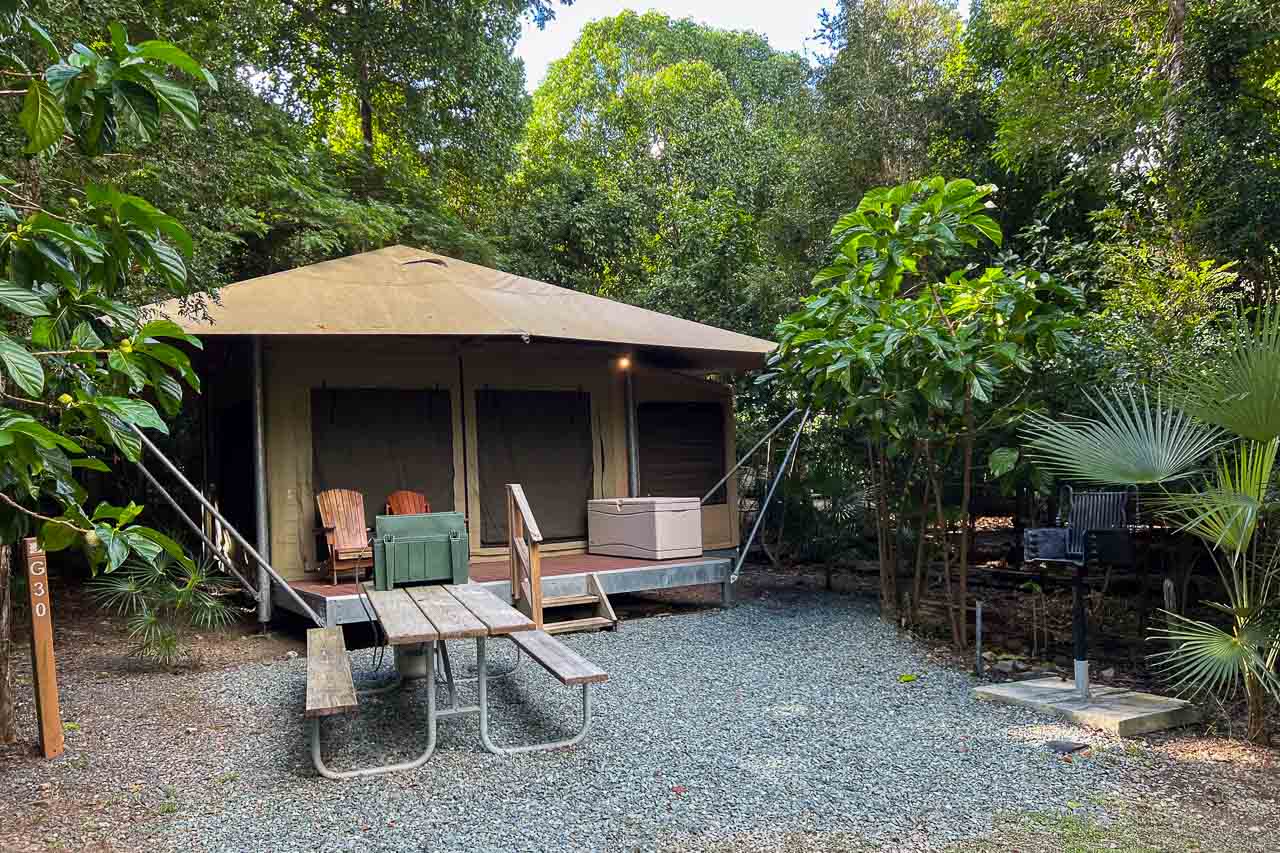
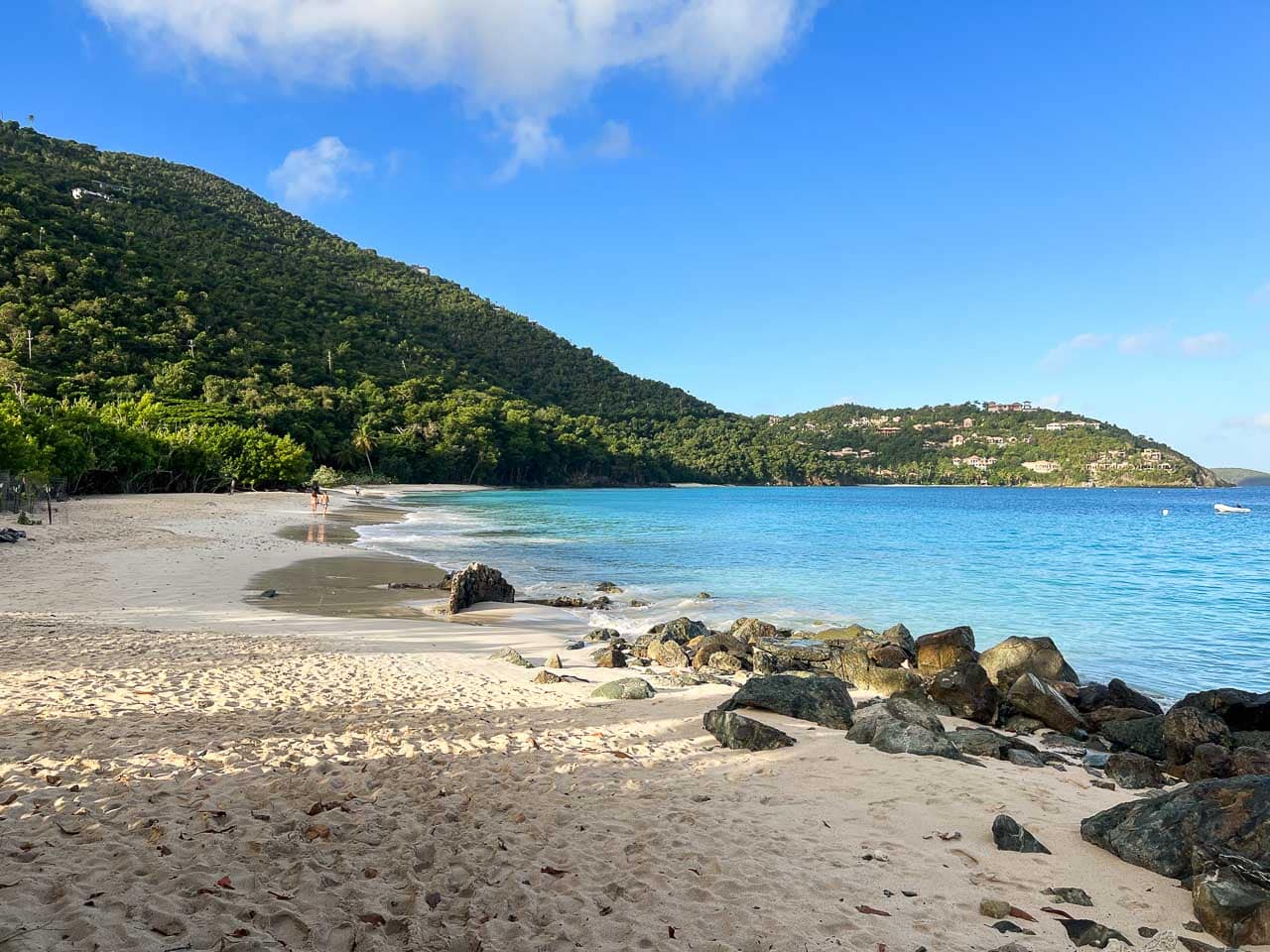
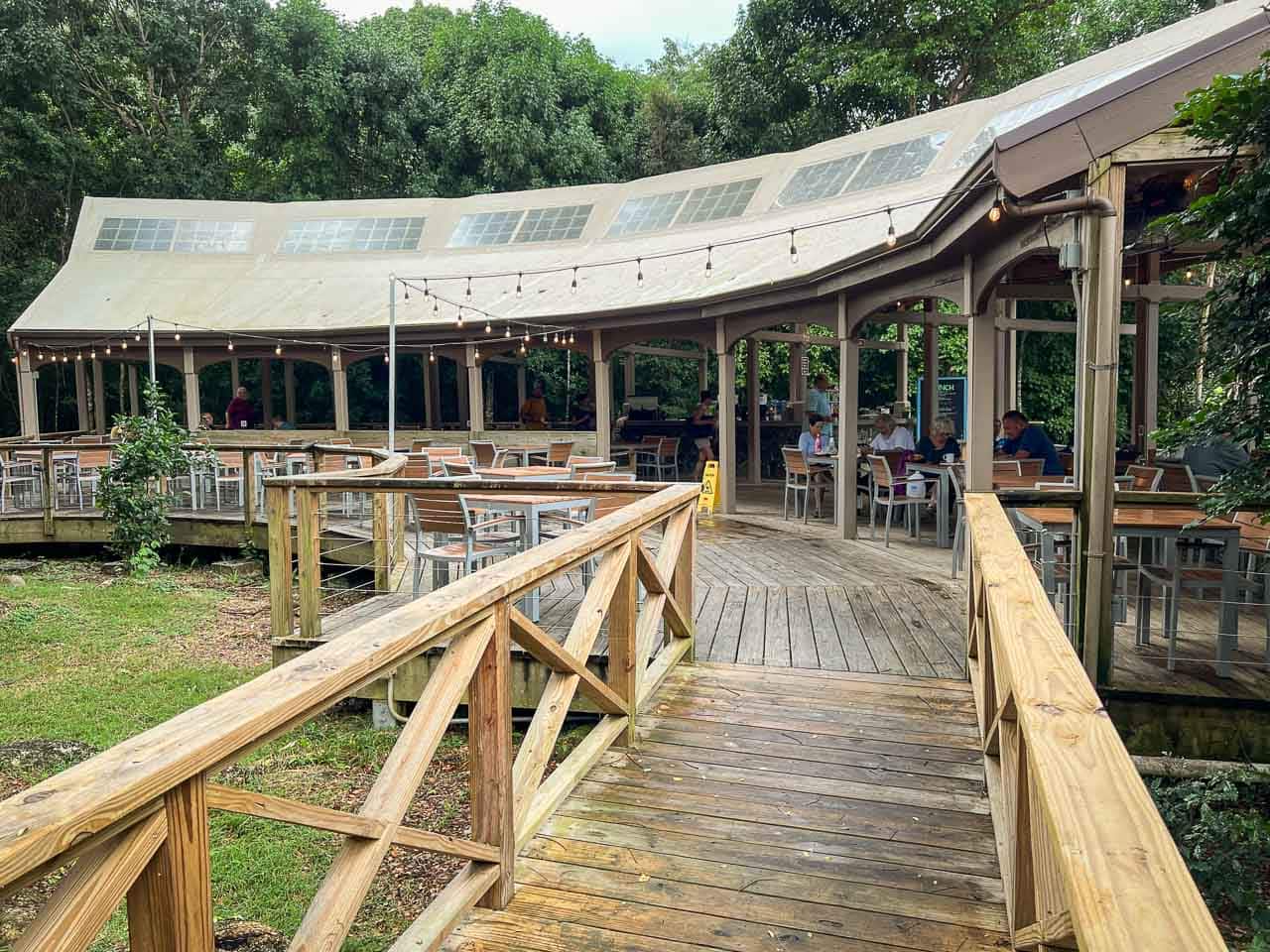
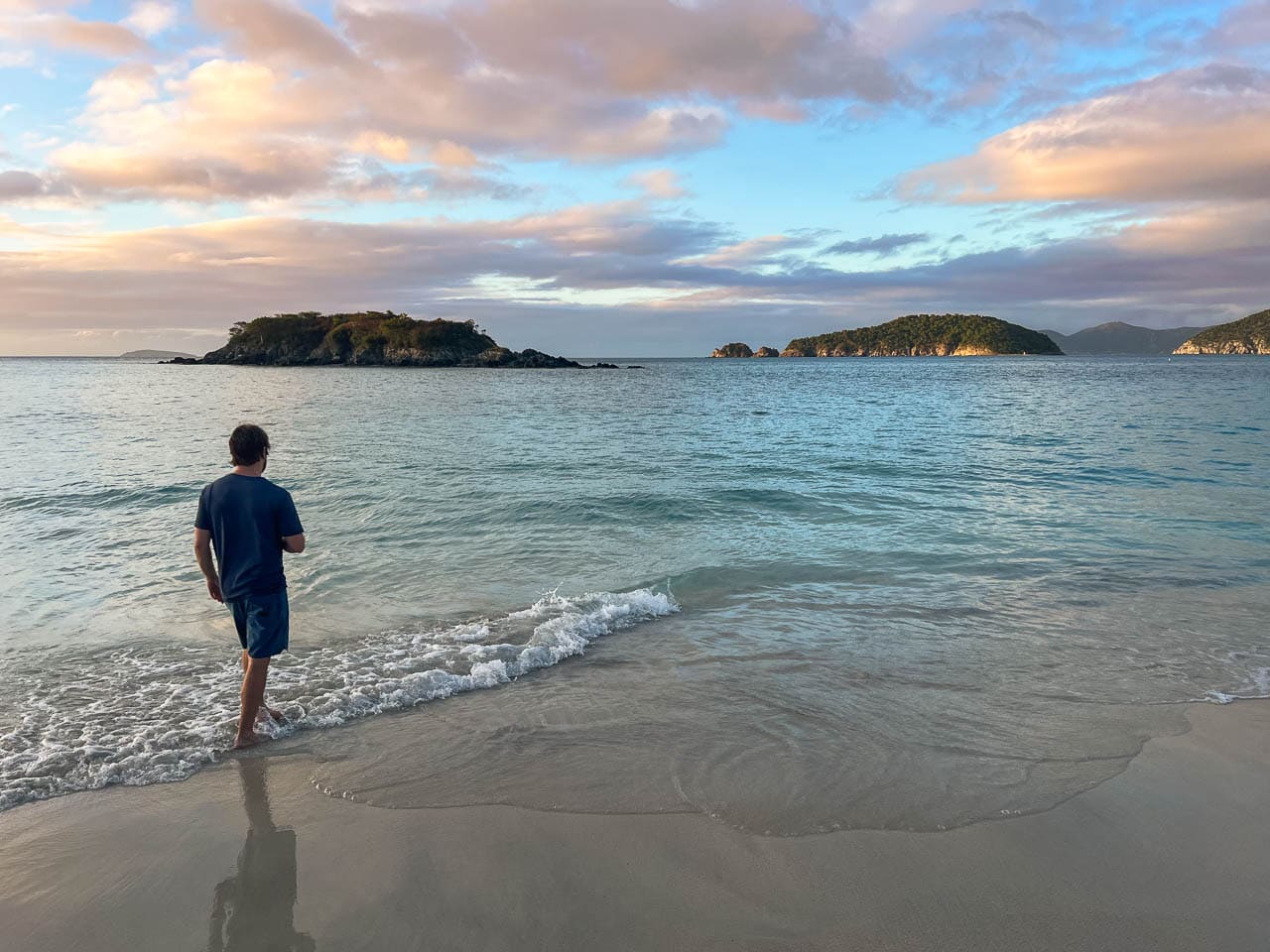
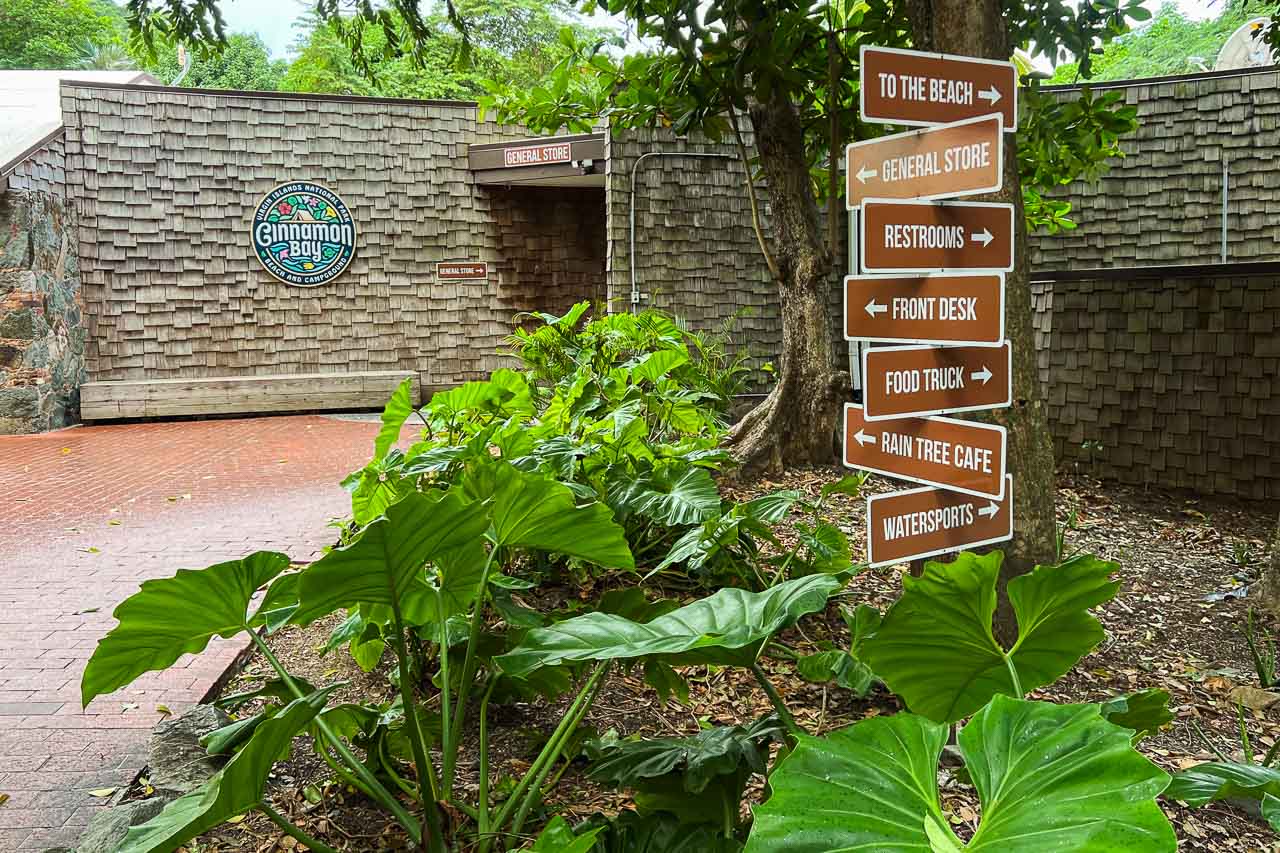
The first time I saw Cinnamon Bay Beach, I thought it was the most beautiful beach I’d ever seen. And although there may be beaches in Virgin Islands National Park that are even more breathtaking, as far as beach camping in national park goes, this one is impossible to beat.
As the longest beach on St. John, this sandy beach allows visitors to spread out, meaning that it never really feels crowded. Its combination of soft sand, turquoise water, lush vegetation, and plenty of amenities makes it a popular choice among park visitors.
Cinnamon Bay is also home to the only campground in Virgin Islands National Park, offering platform tent sites, deluxe eco-tents, and a limited number of cottage rooms.
Other amenities include a restaurant, food truck, beach bar, watersports center, beach chair rentals, souvenir shop, restrooms, and showers. In other words, Cinnamon Bay Beach has everything you need for a fun few days on a Caribbean beach.
Honestly, where else in the national parks can you enjoy cocktails on a tropical beach, explore historic plantation ruins, enjoy an al-fresco dinner, hike to a spectacular viewpoint, sleep in comfortable and spacious eco-tents, relax on gorgeous white sand,… all at the same place?




